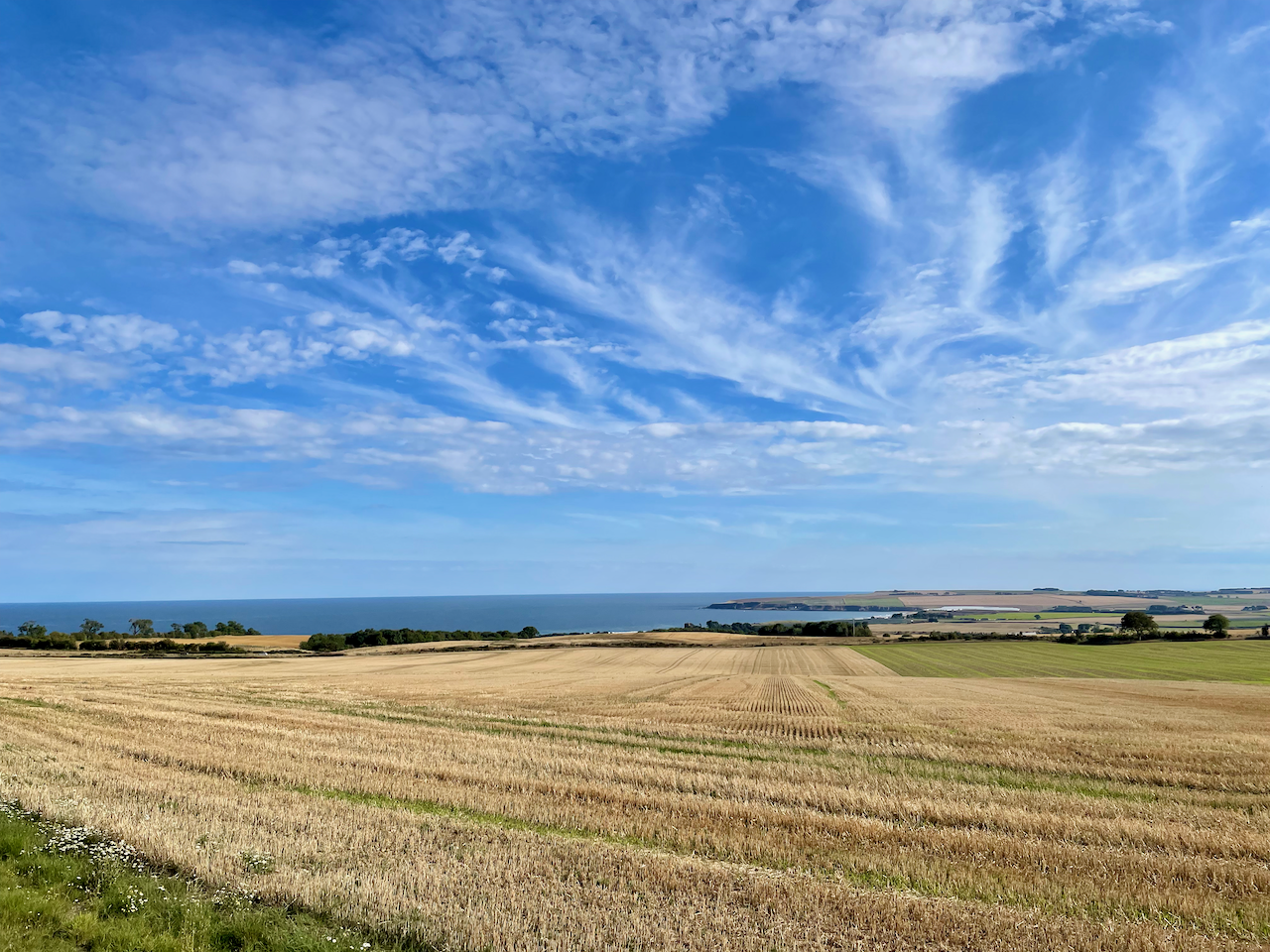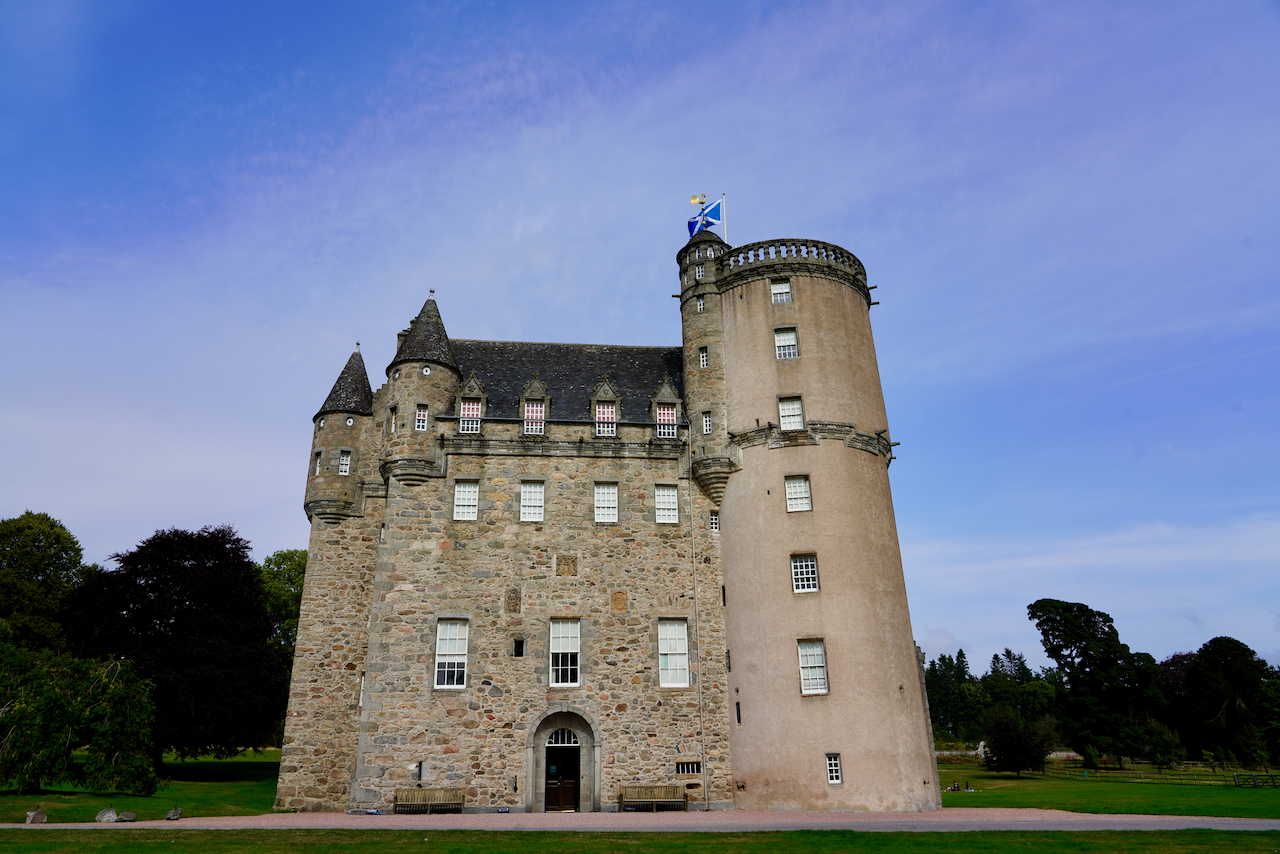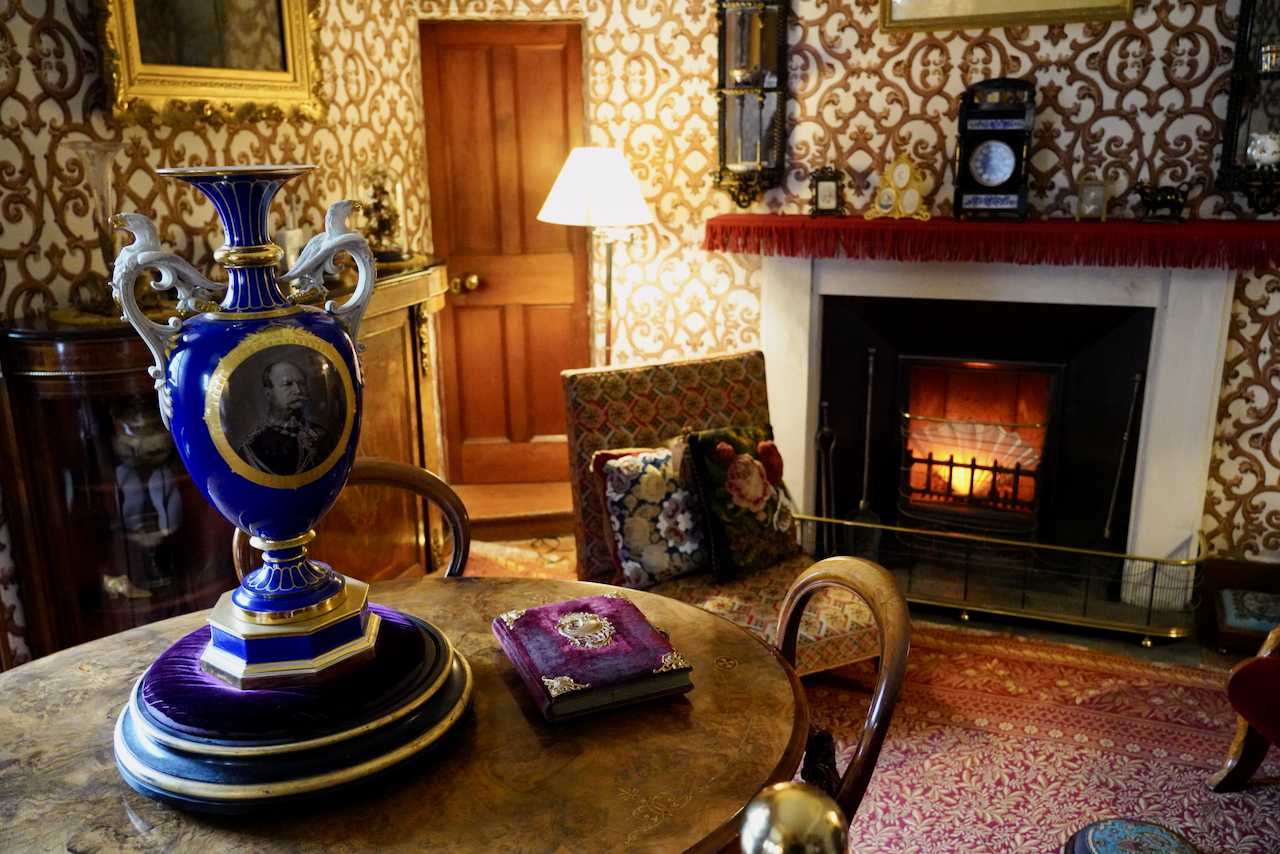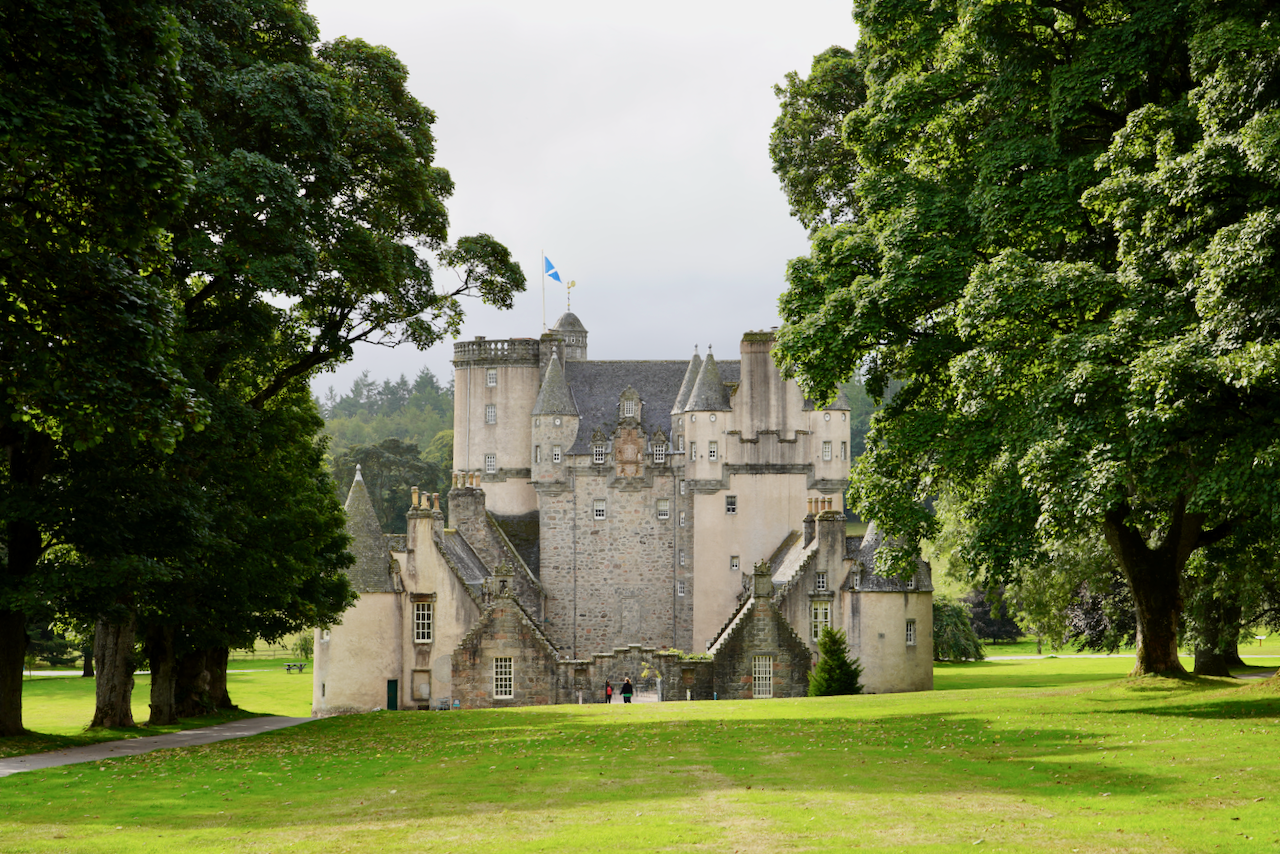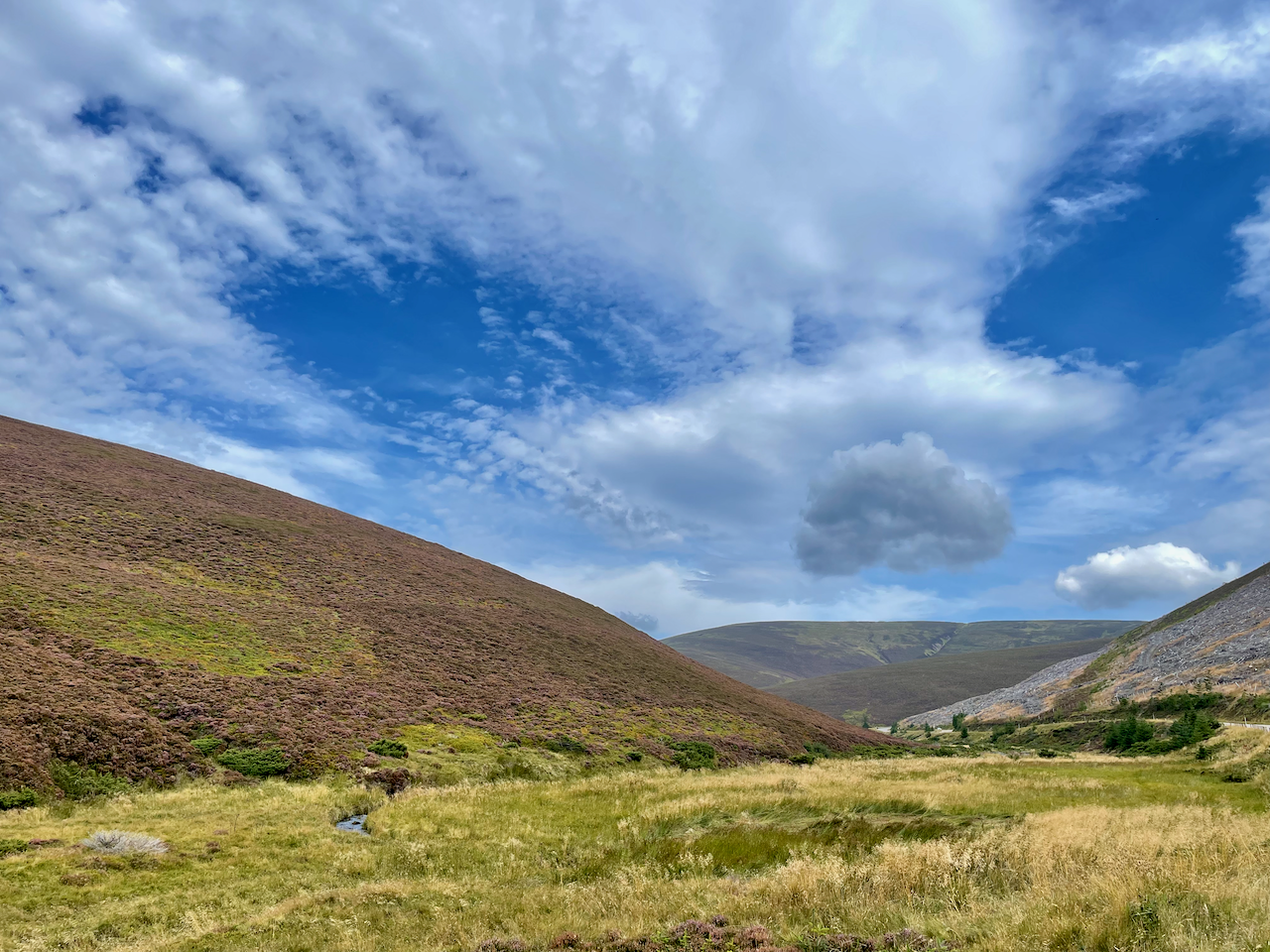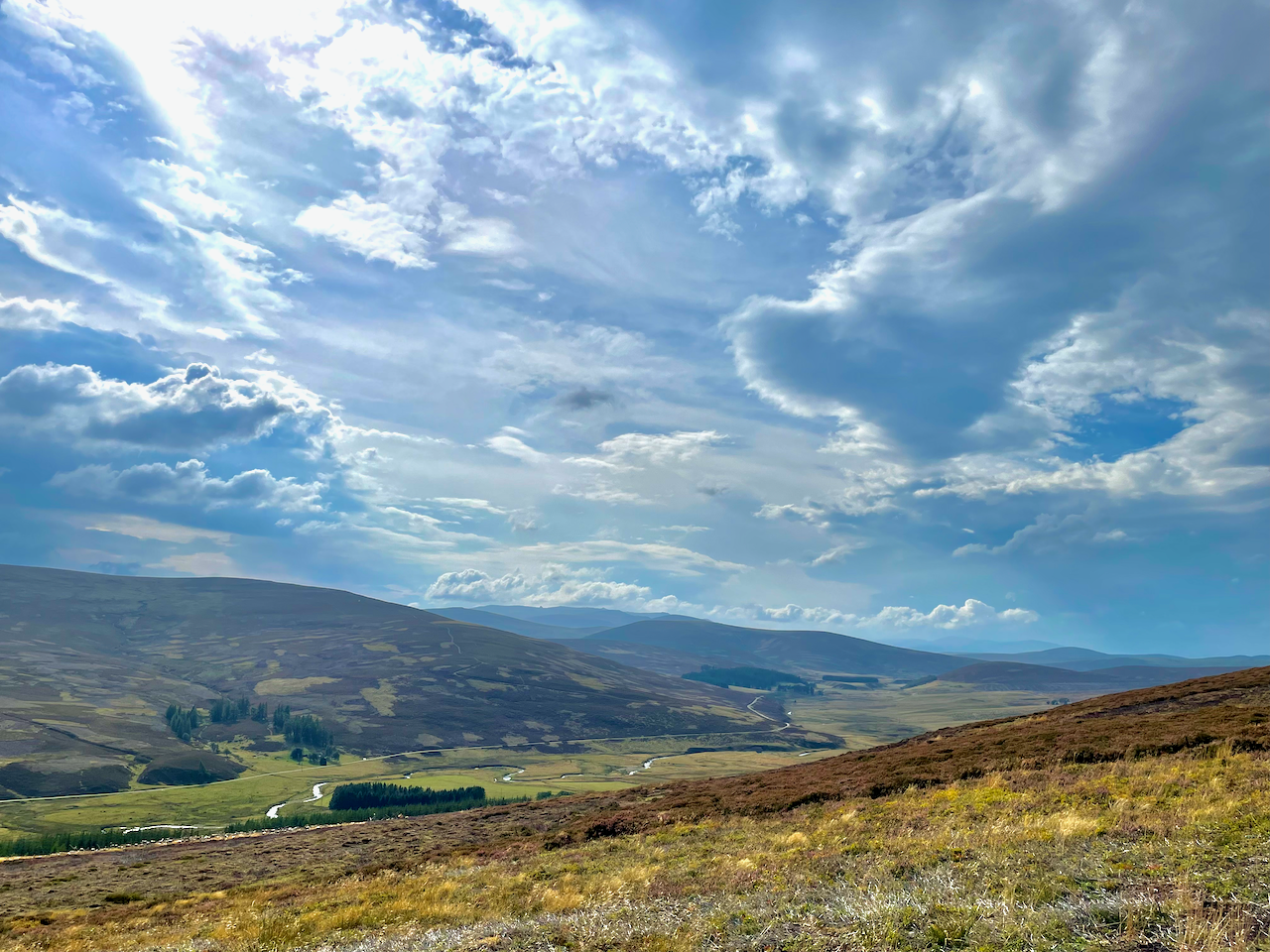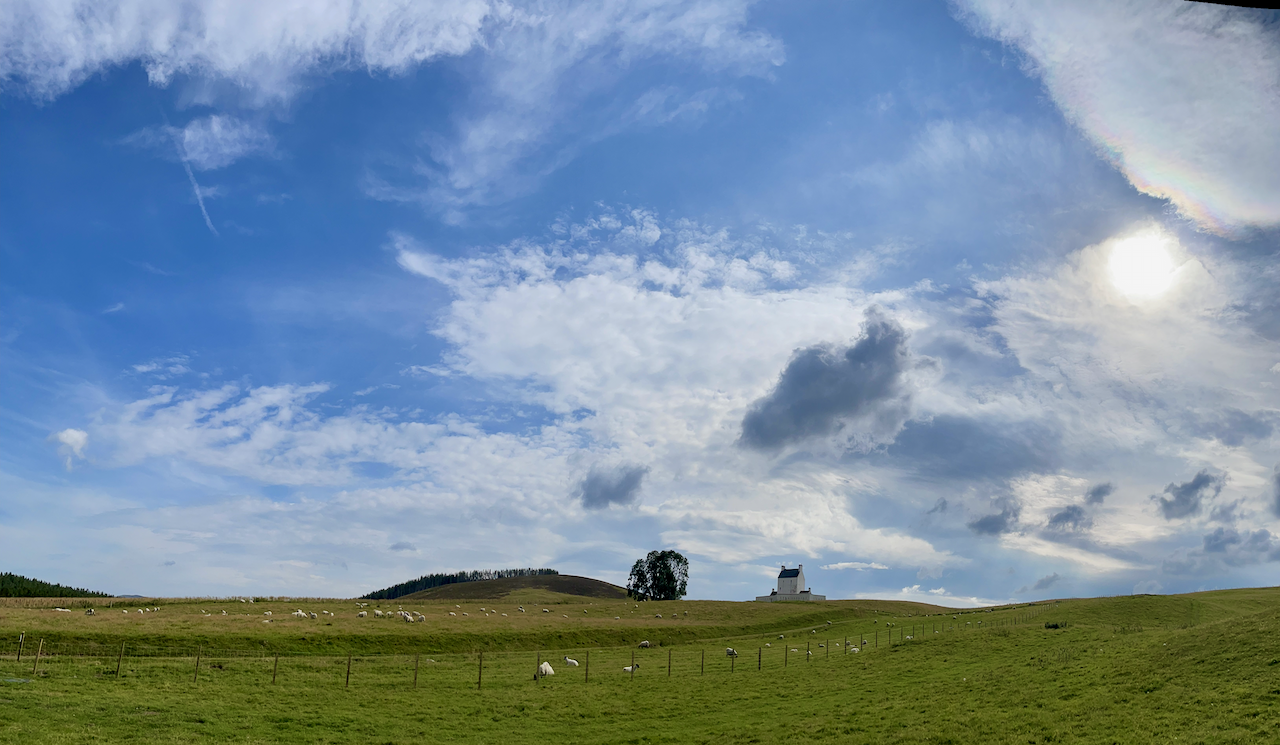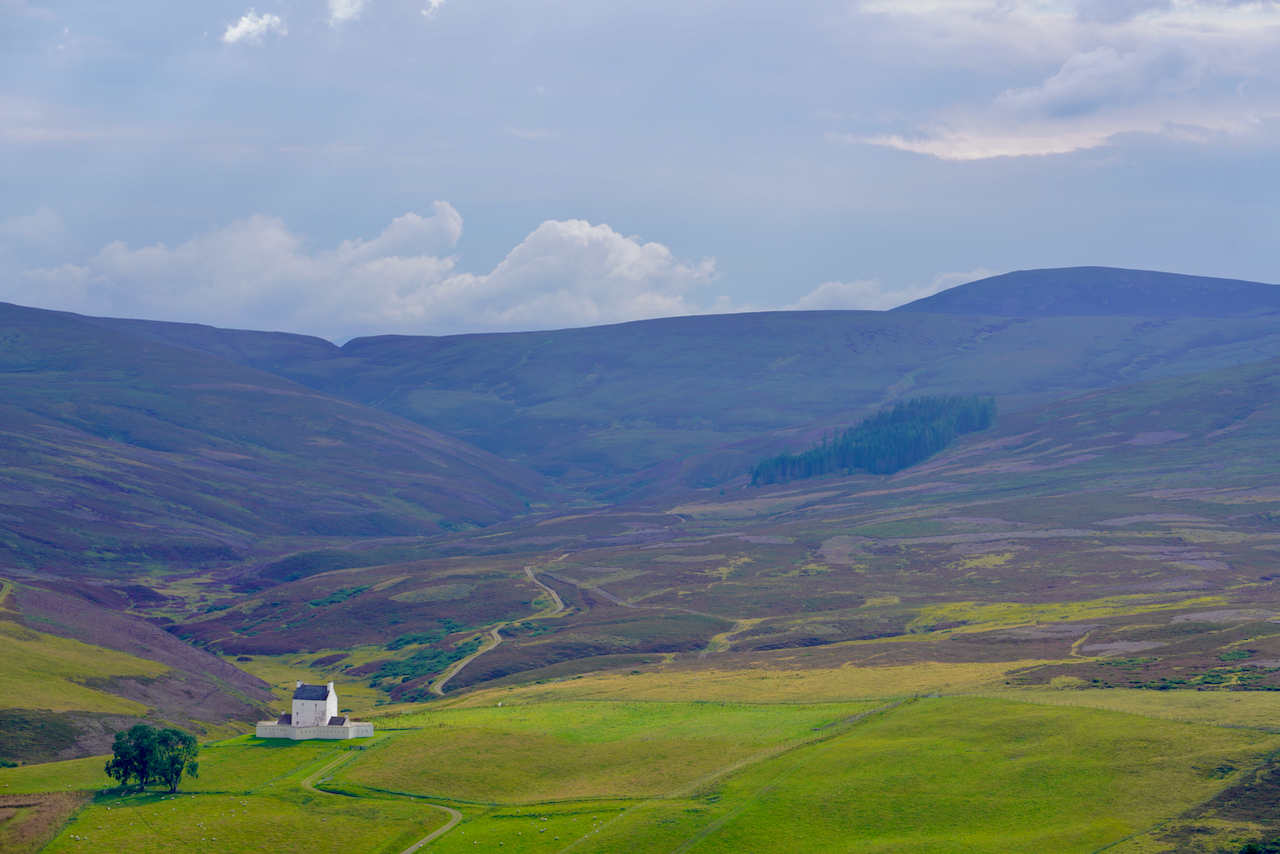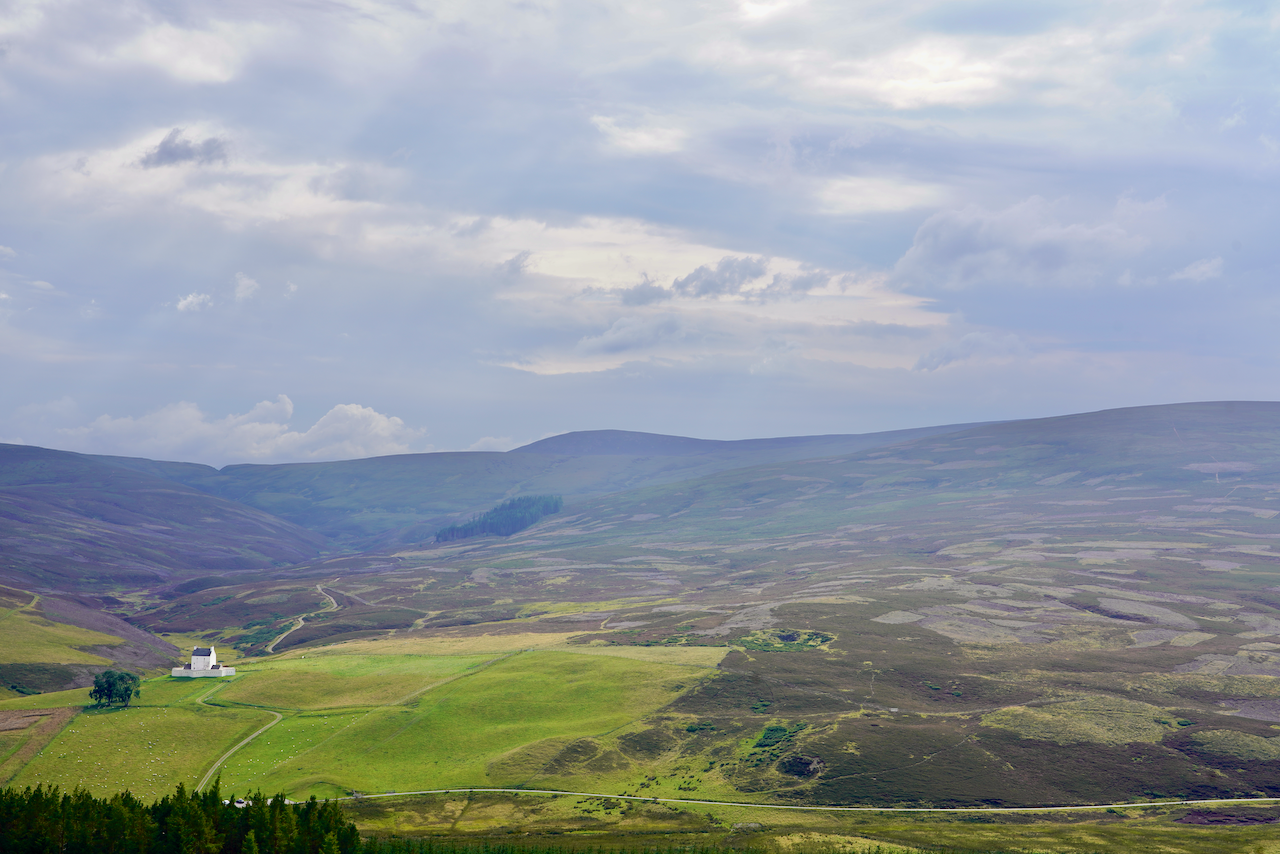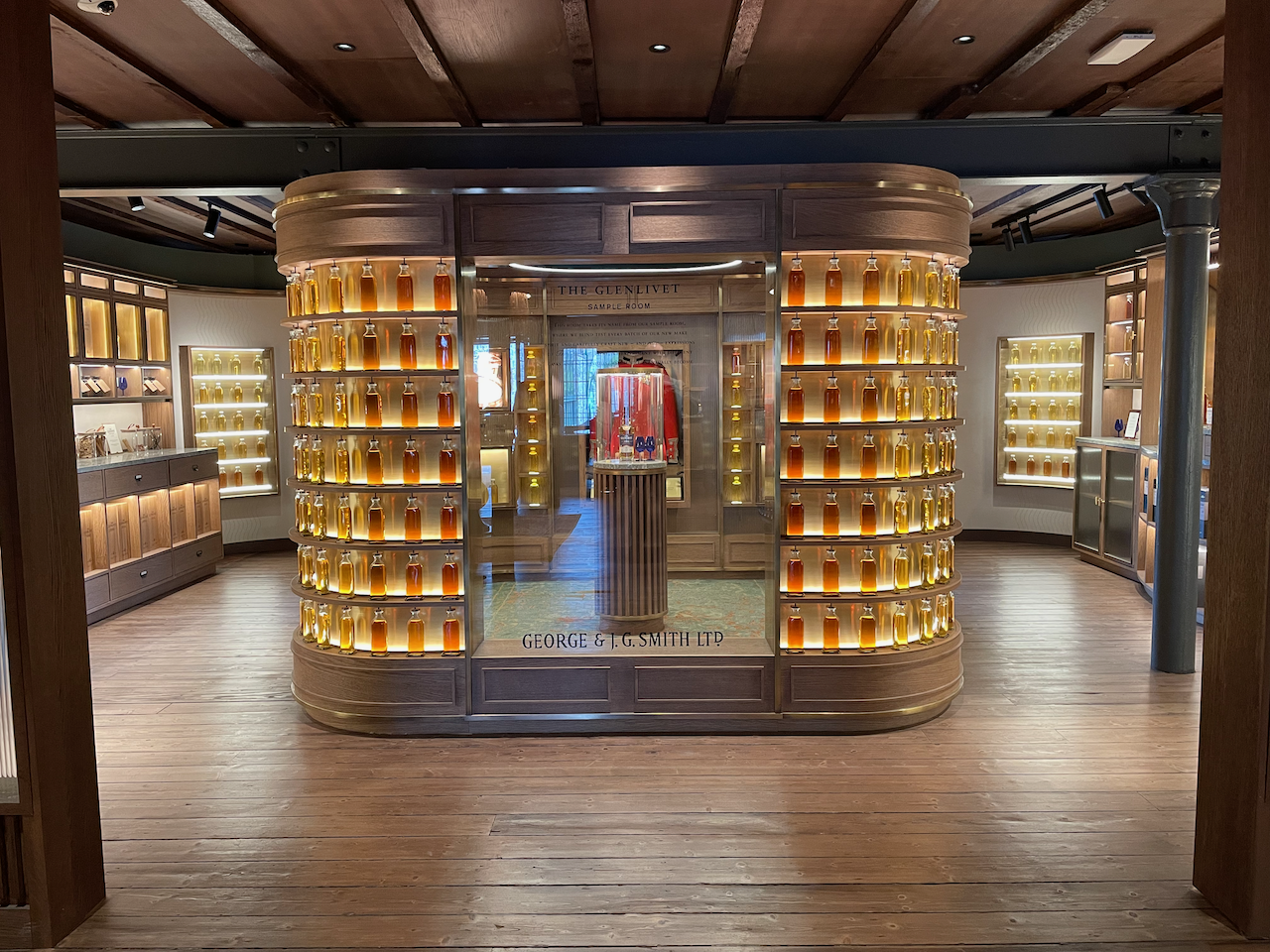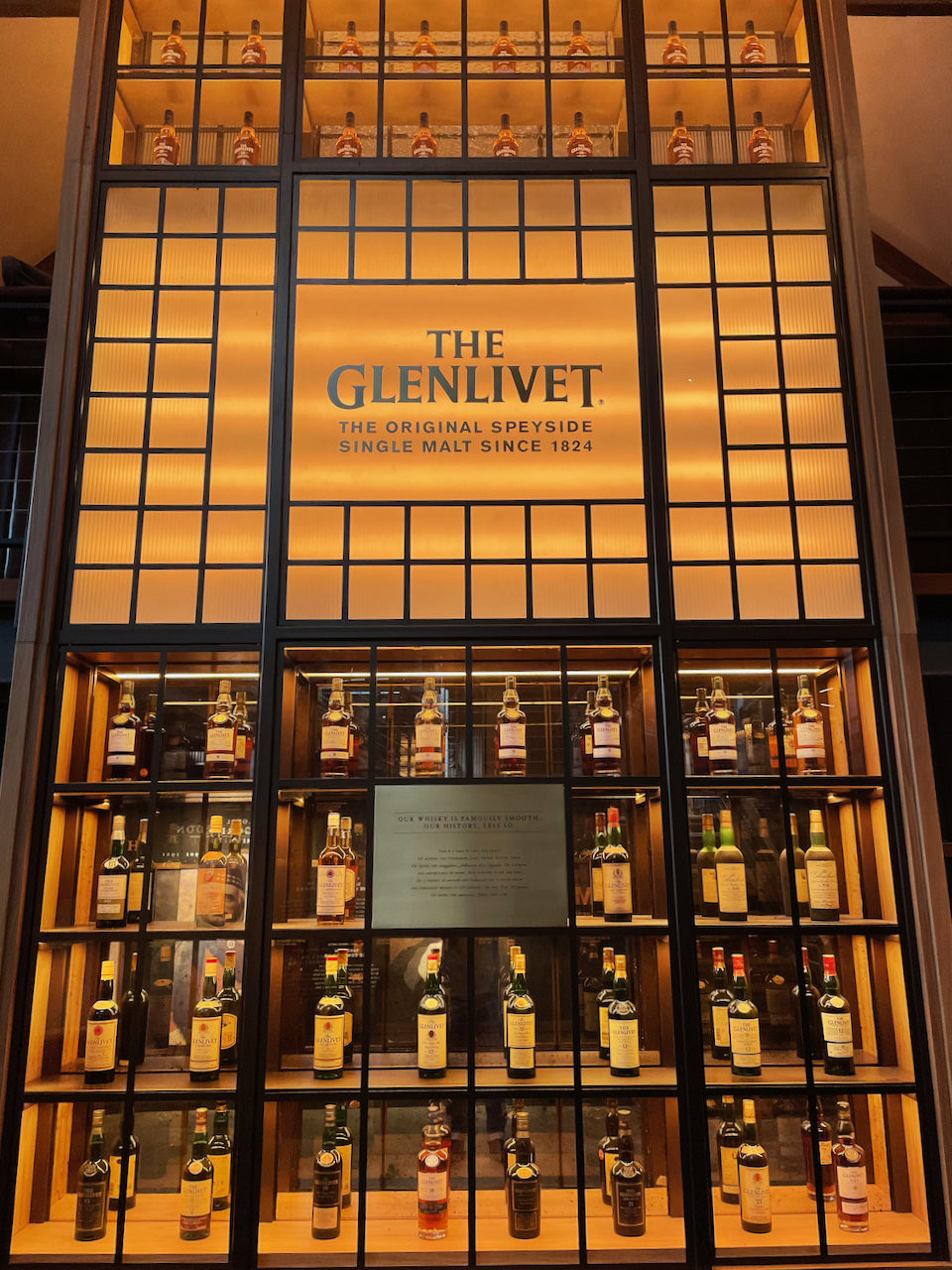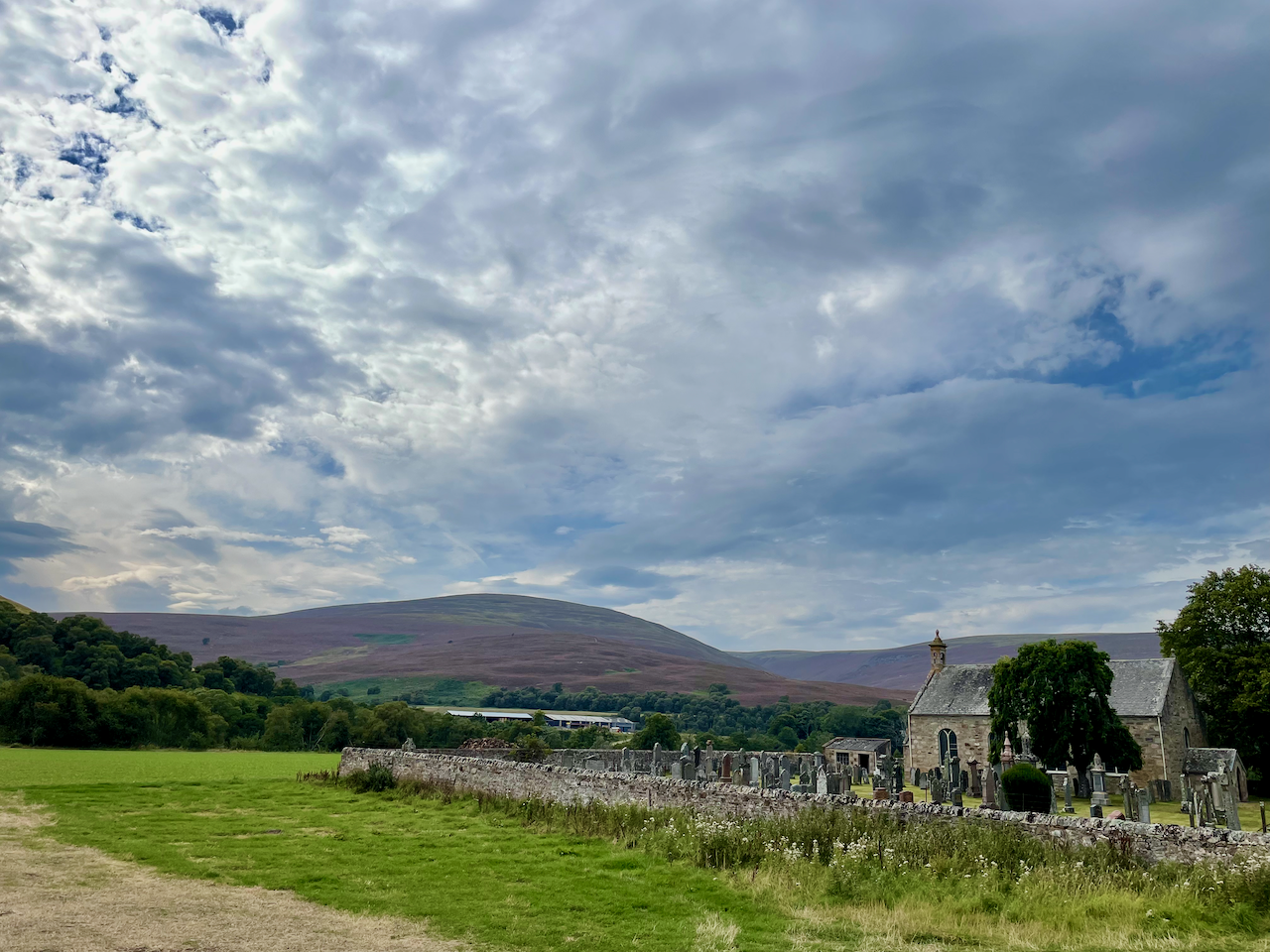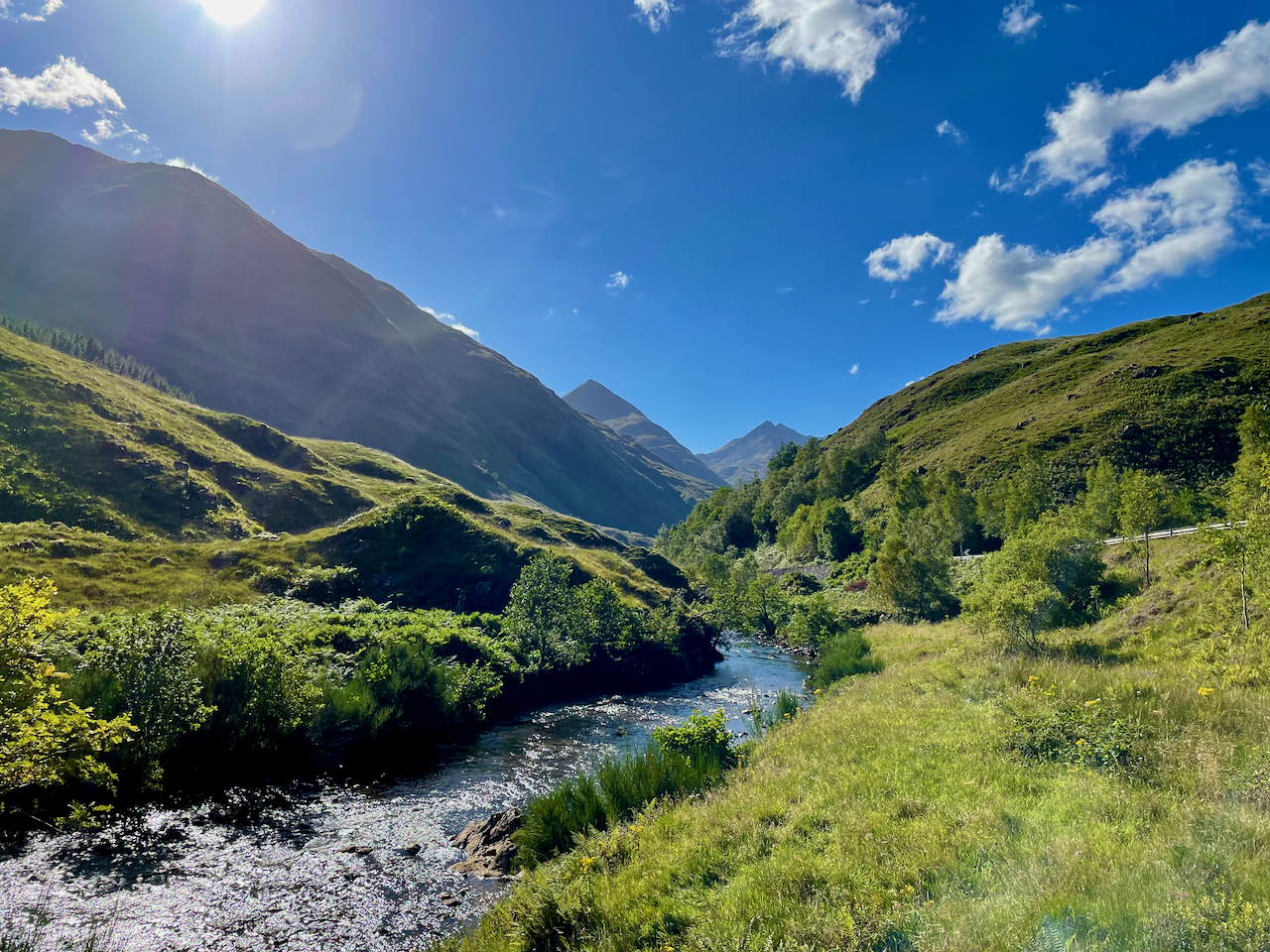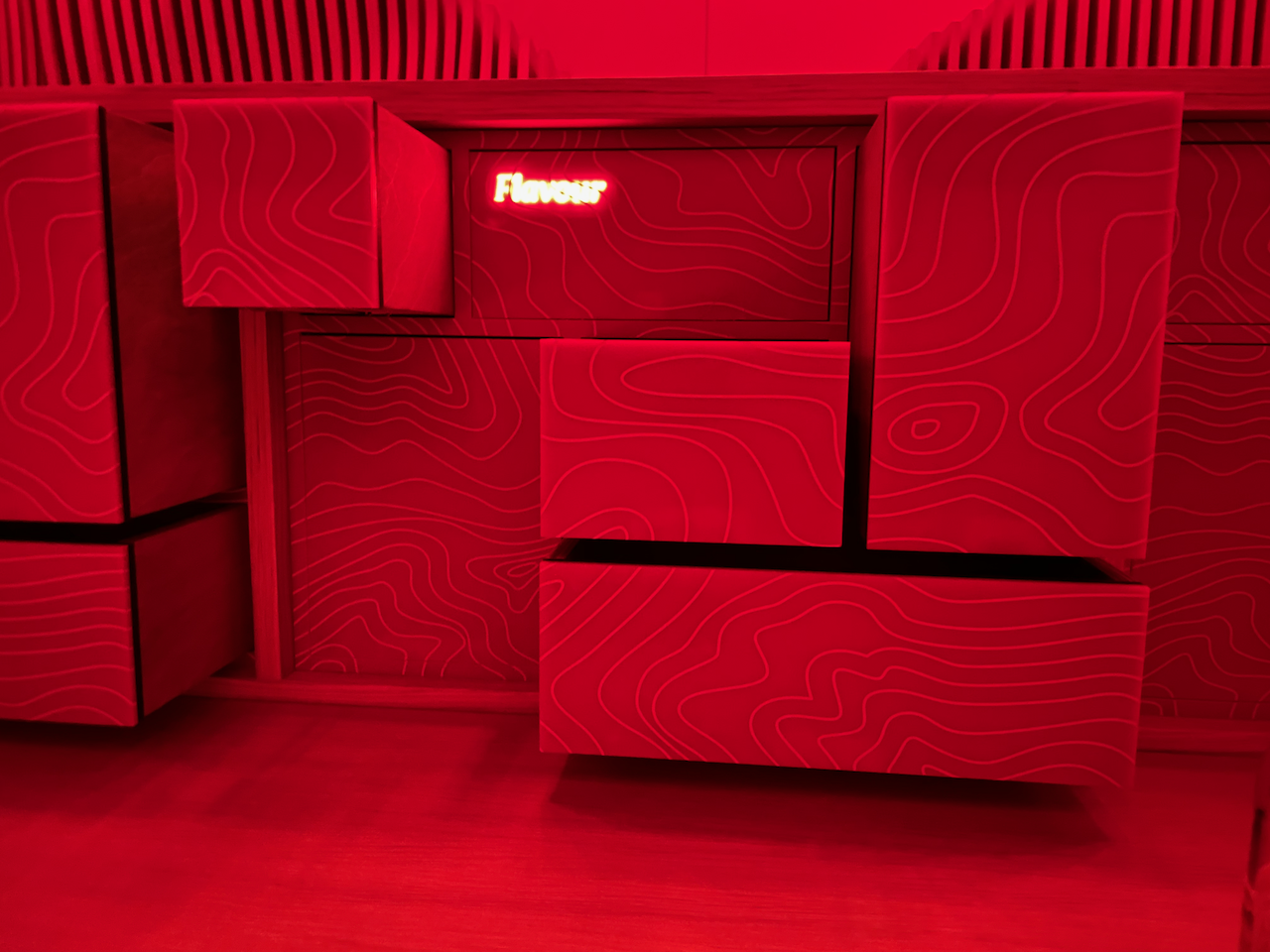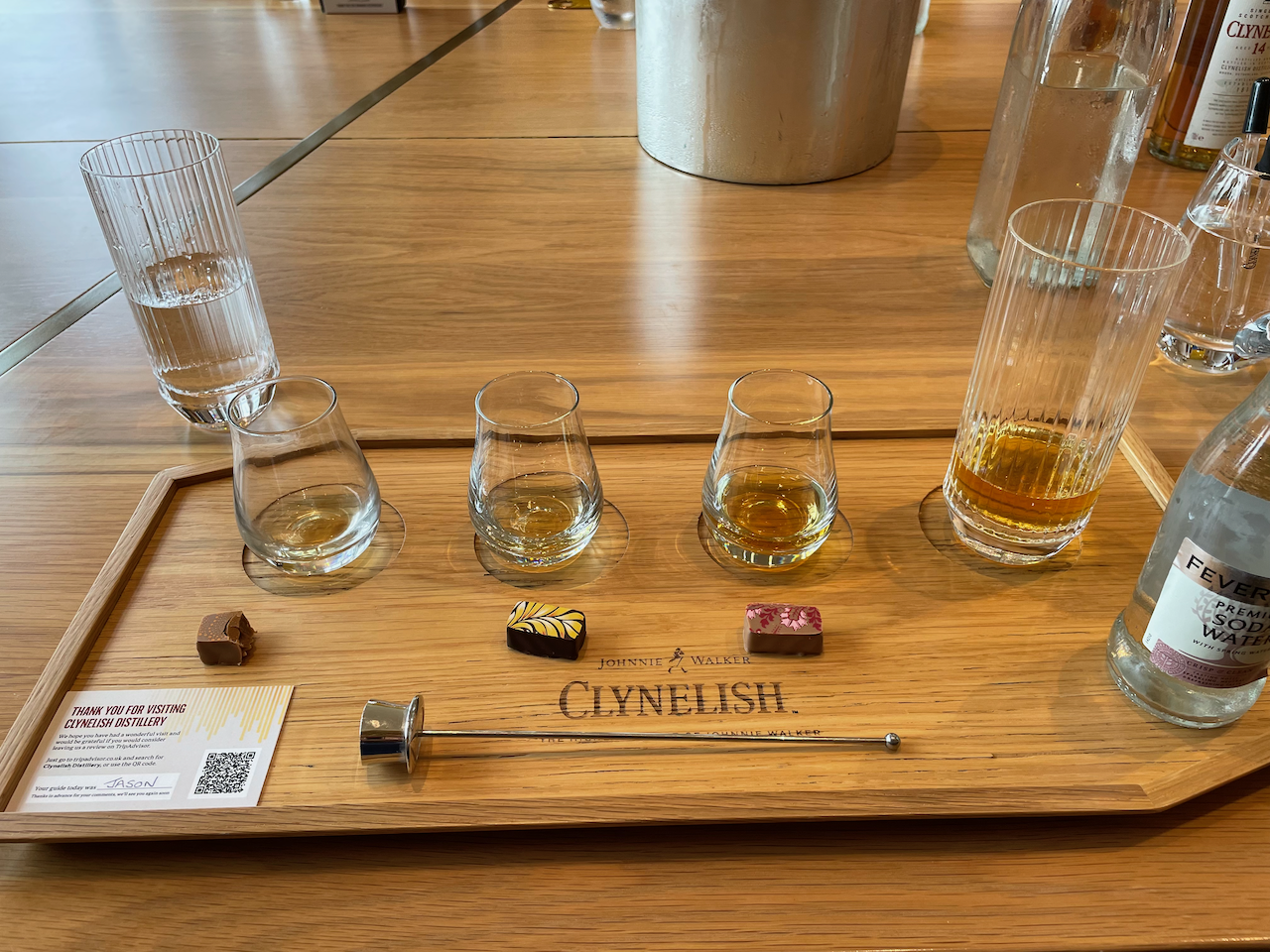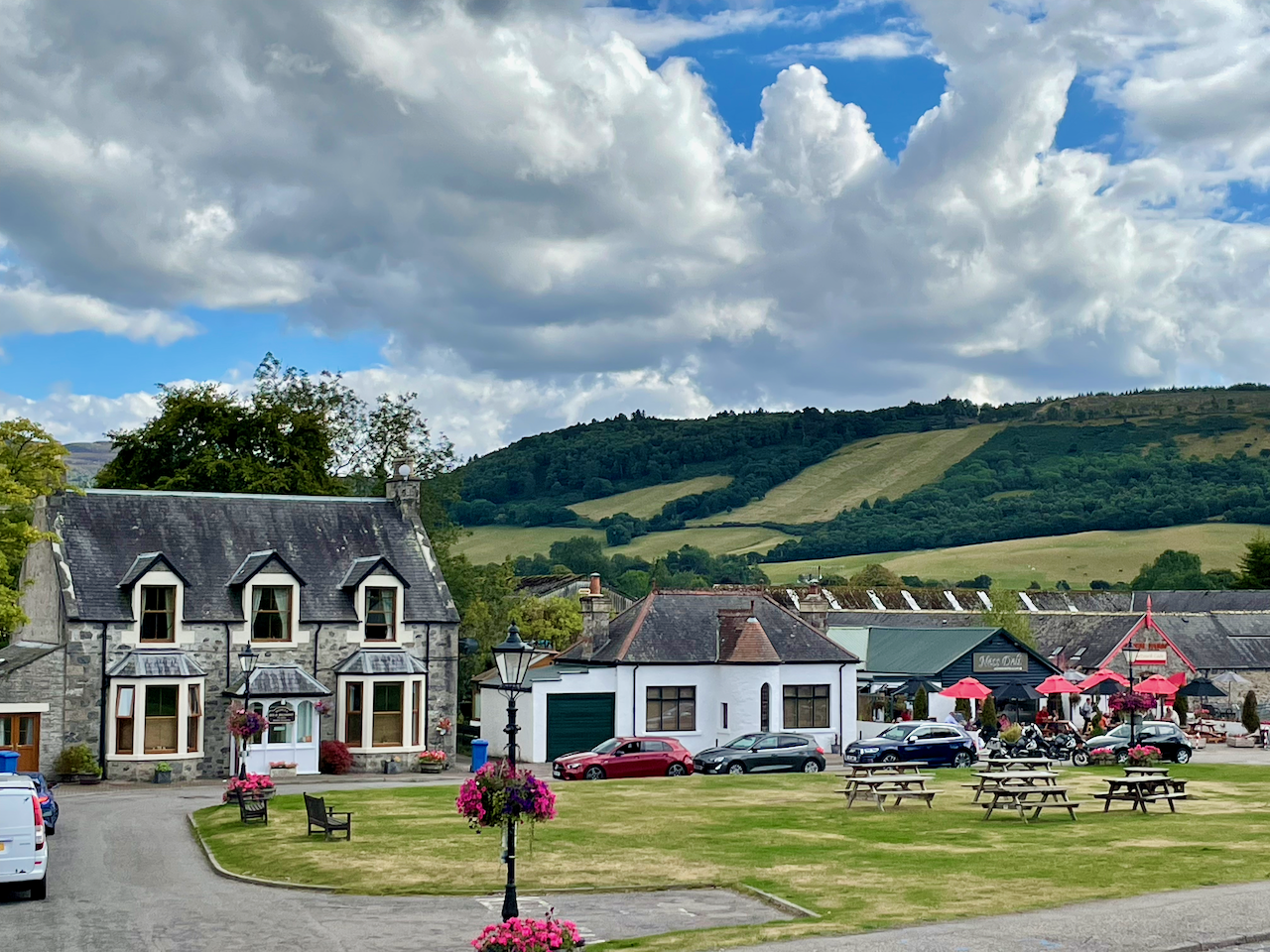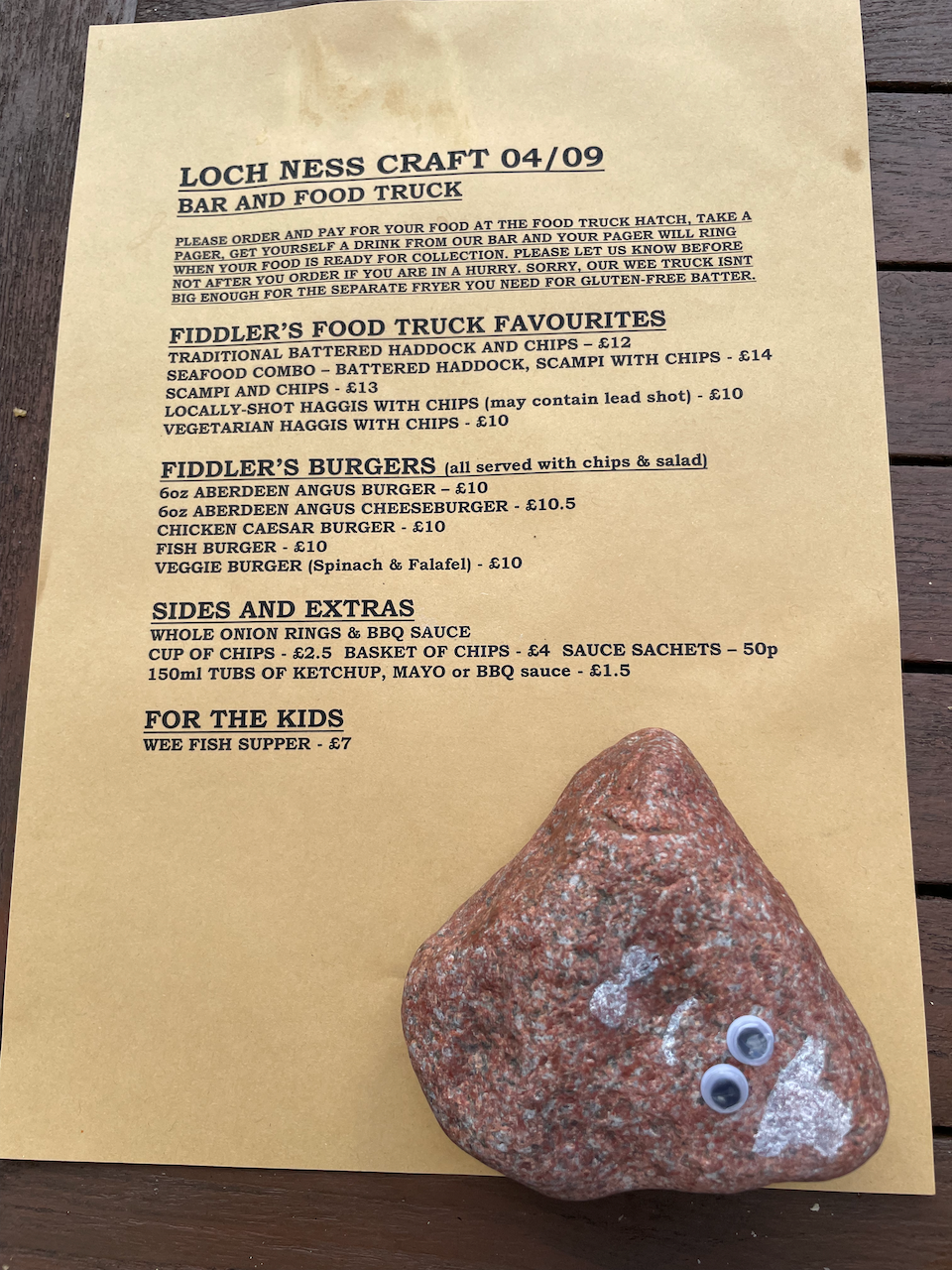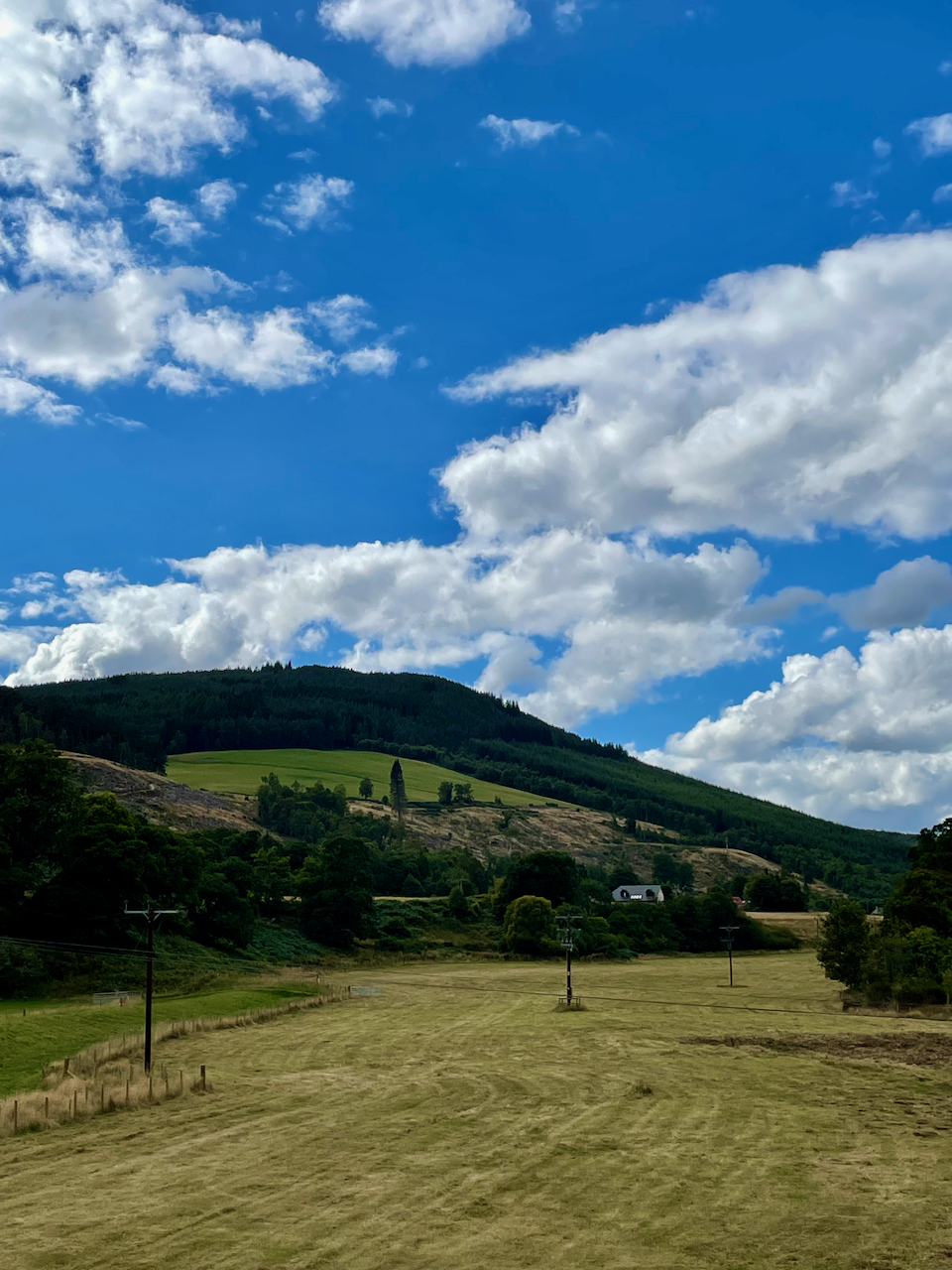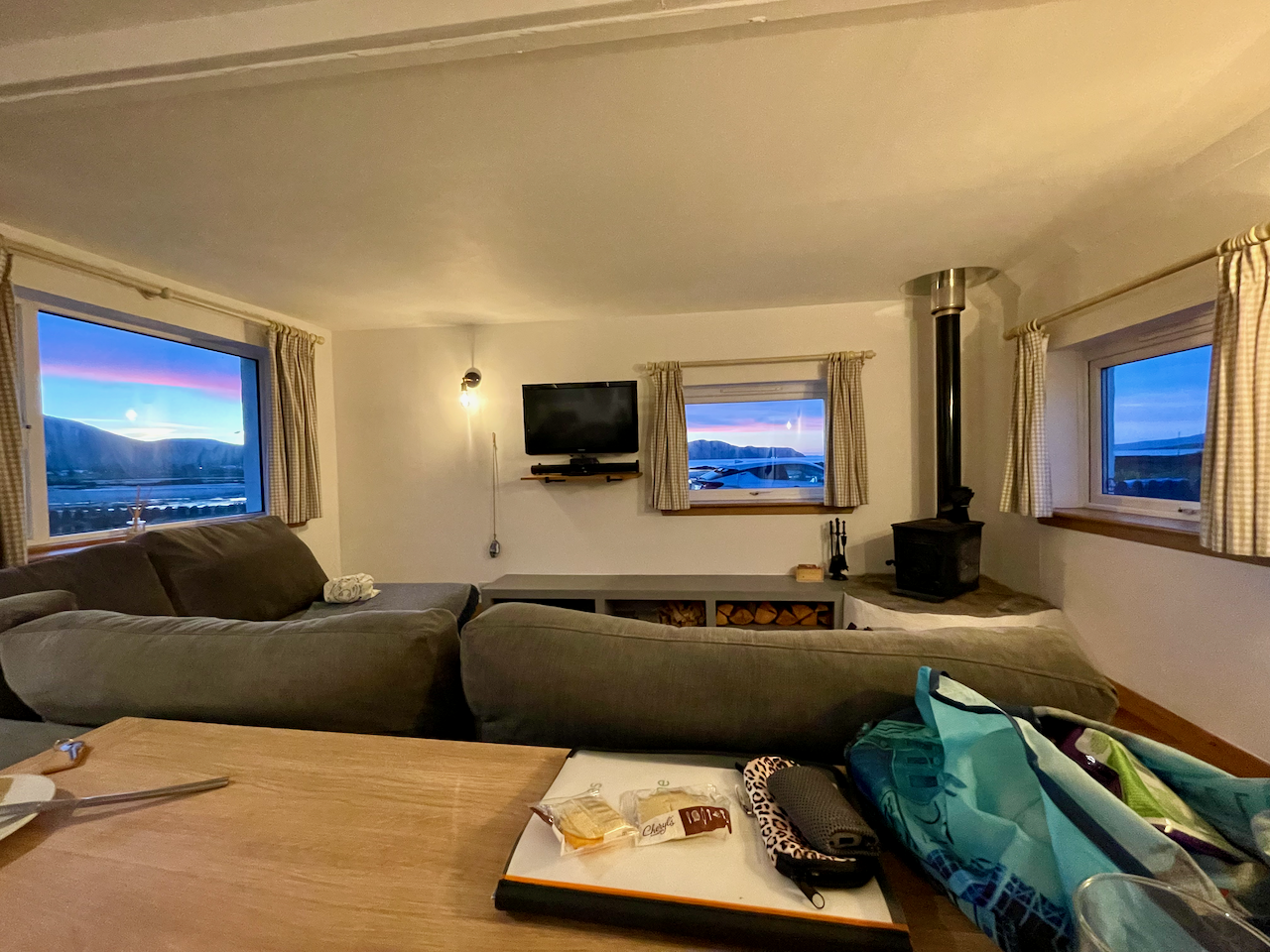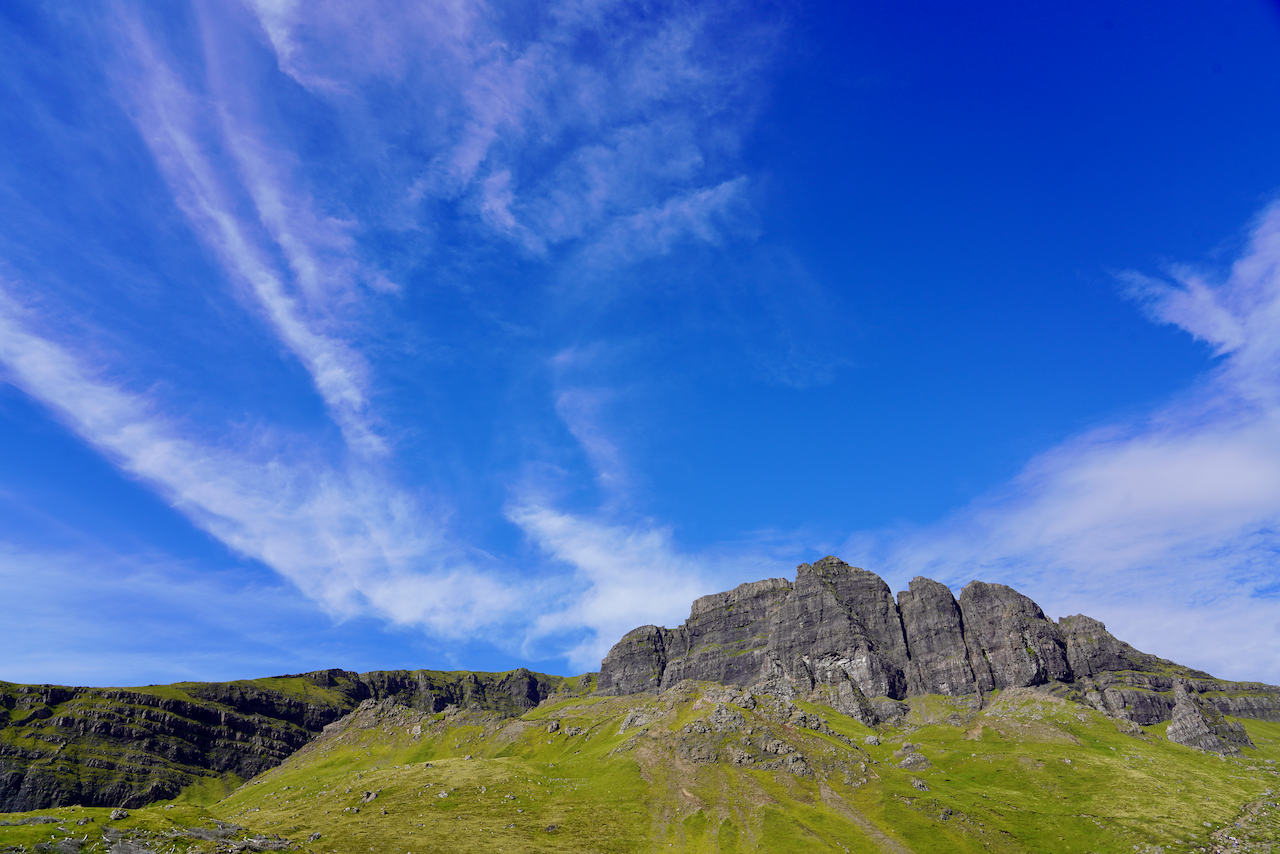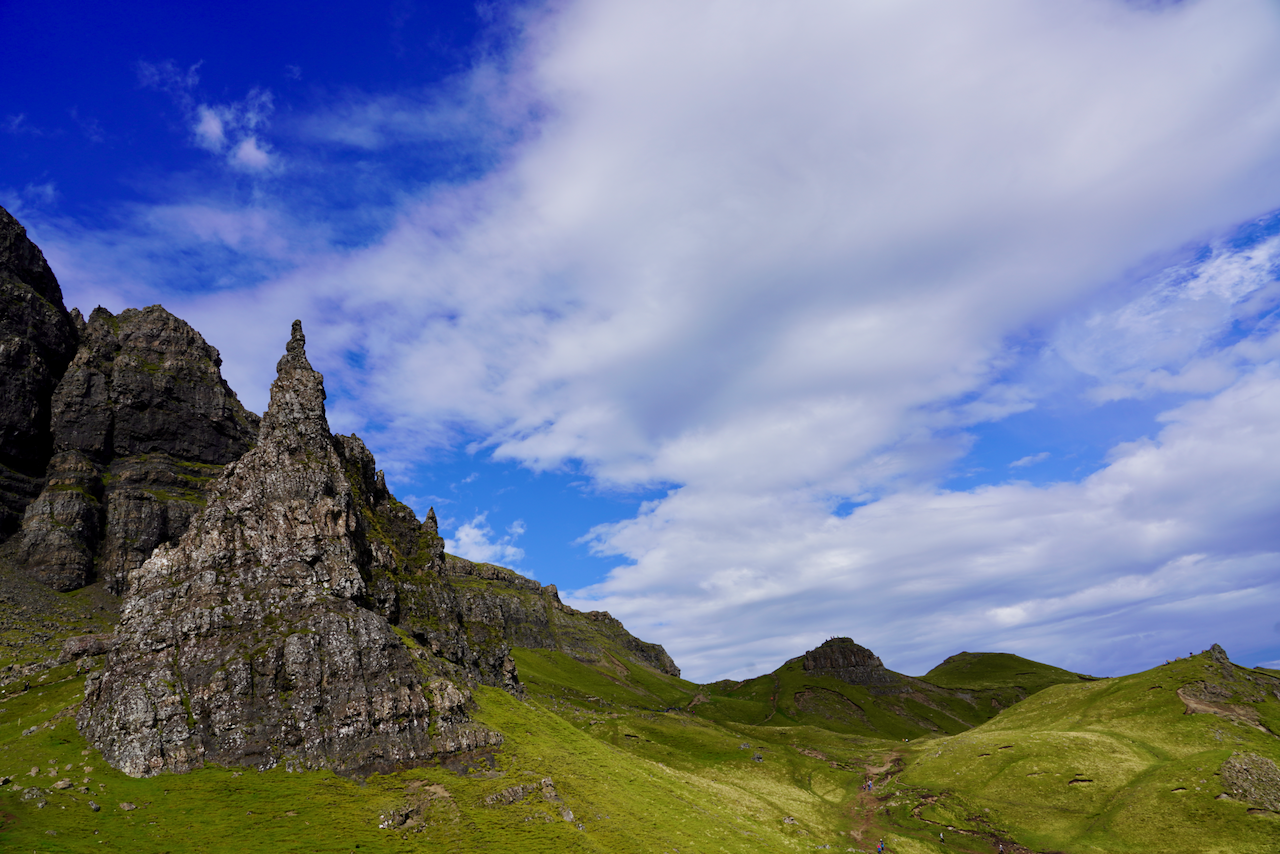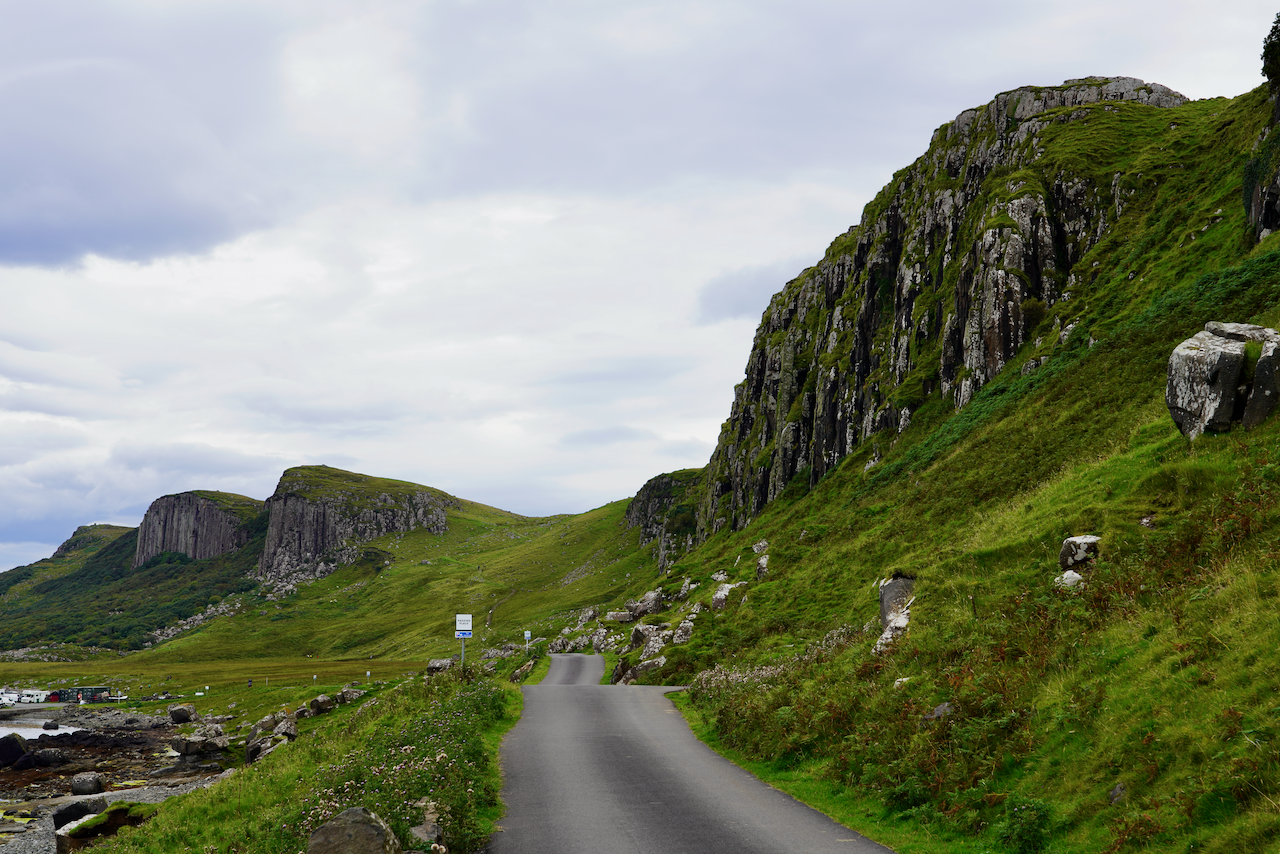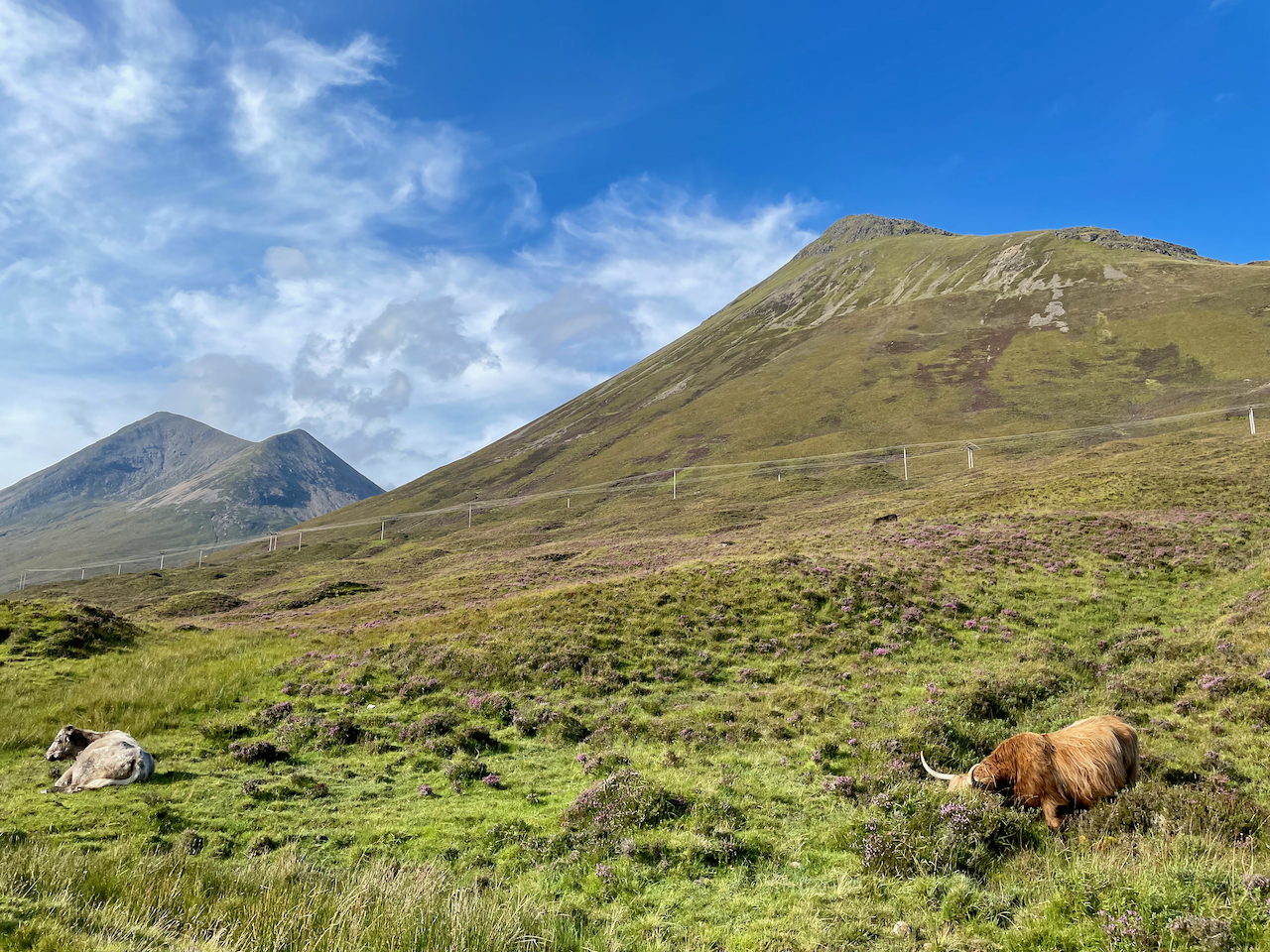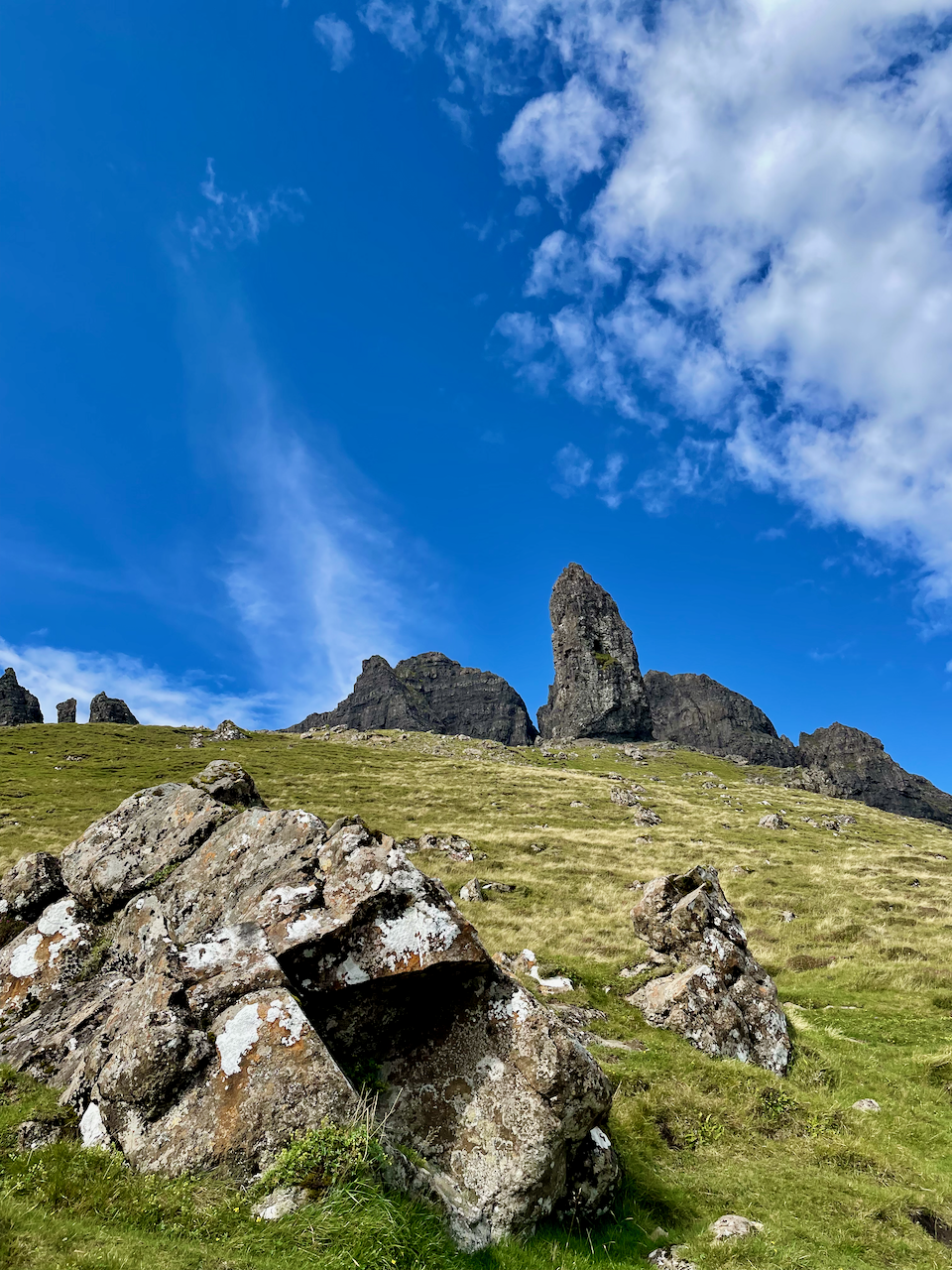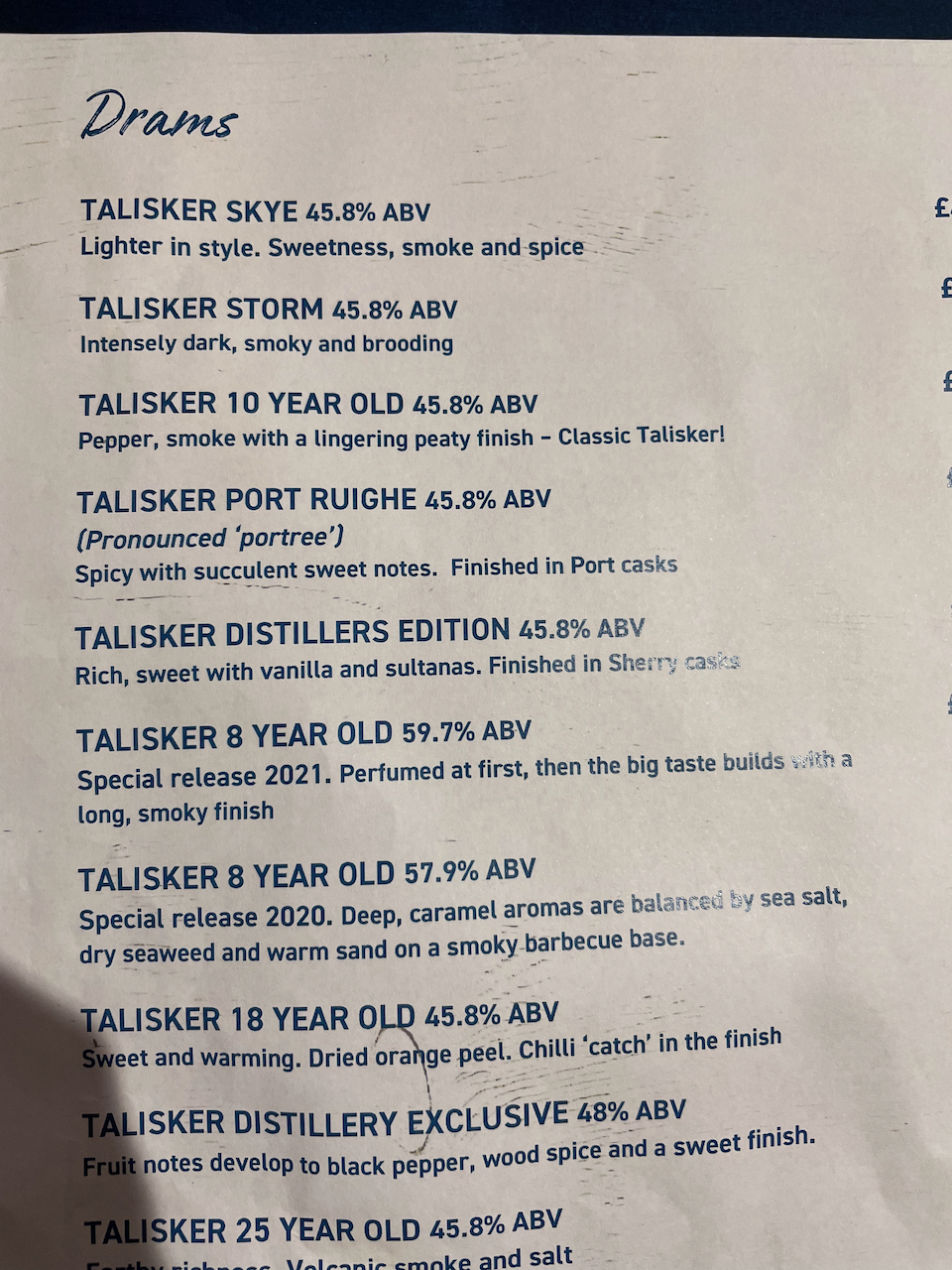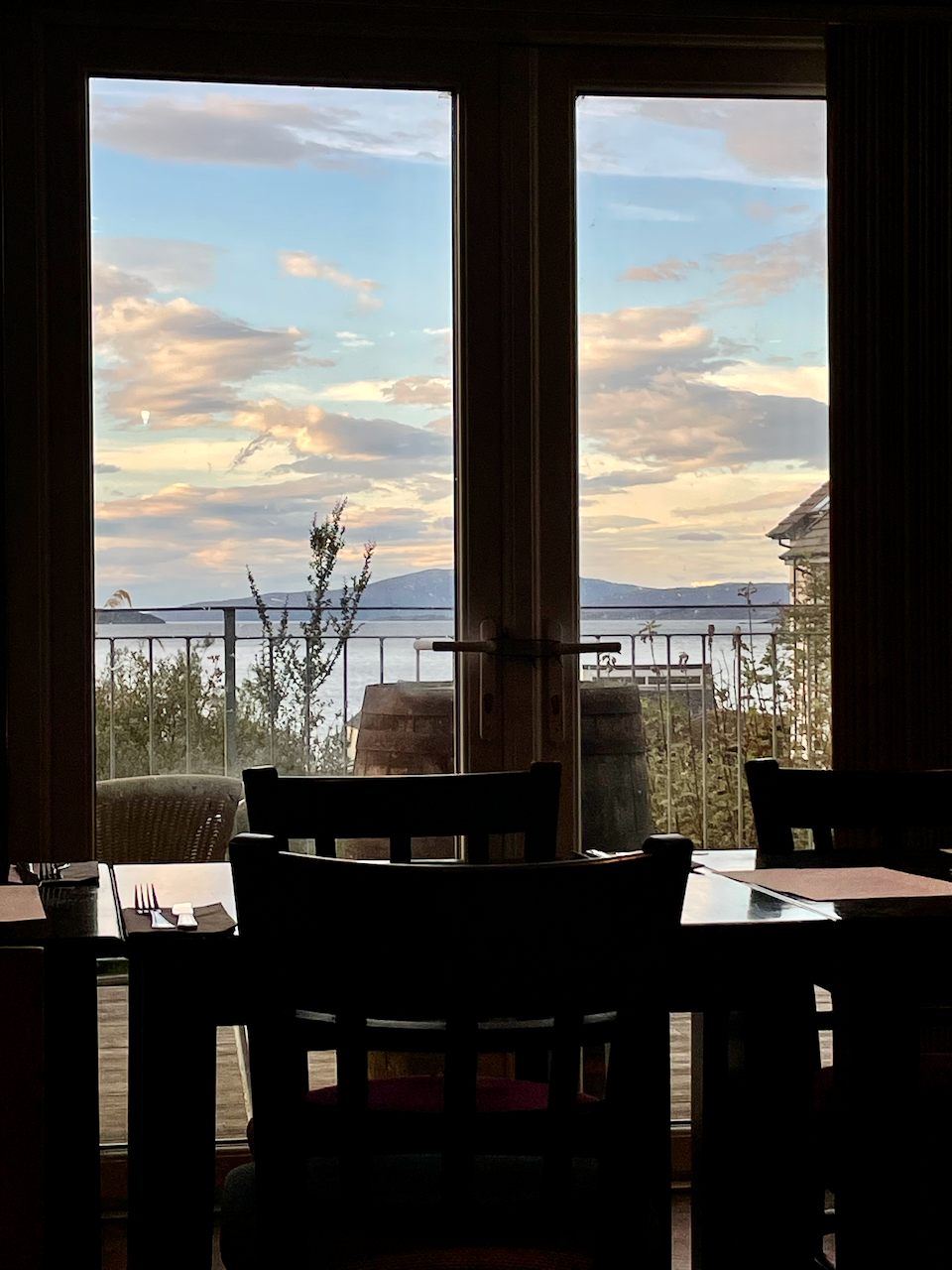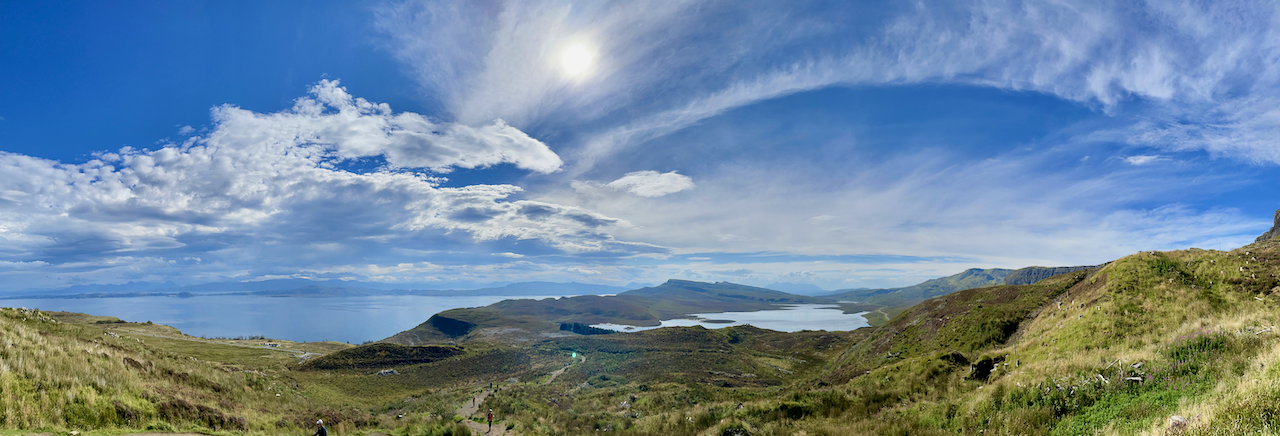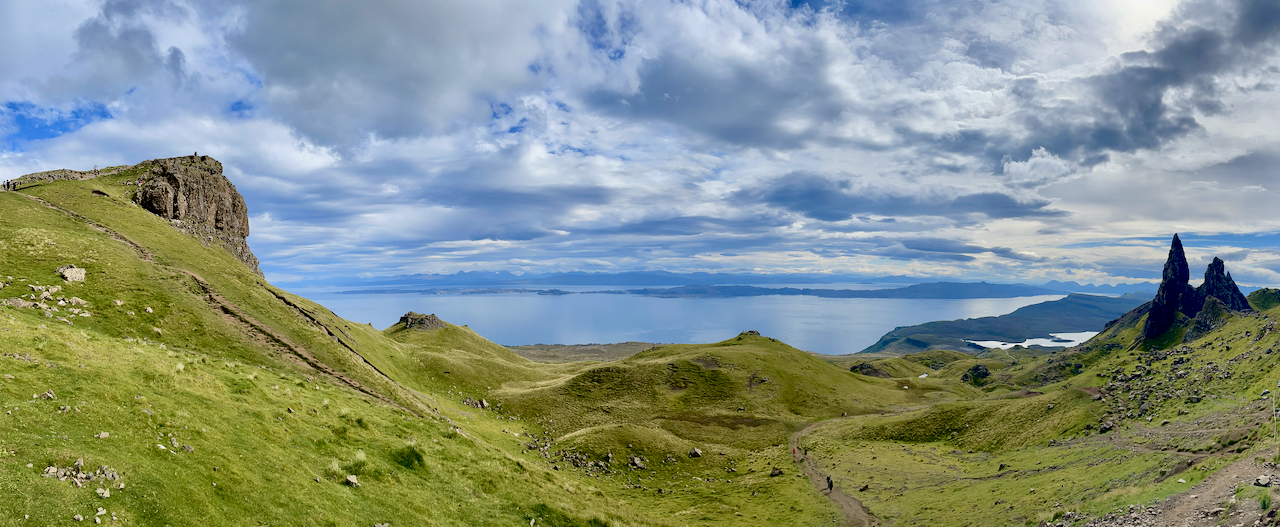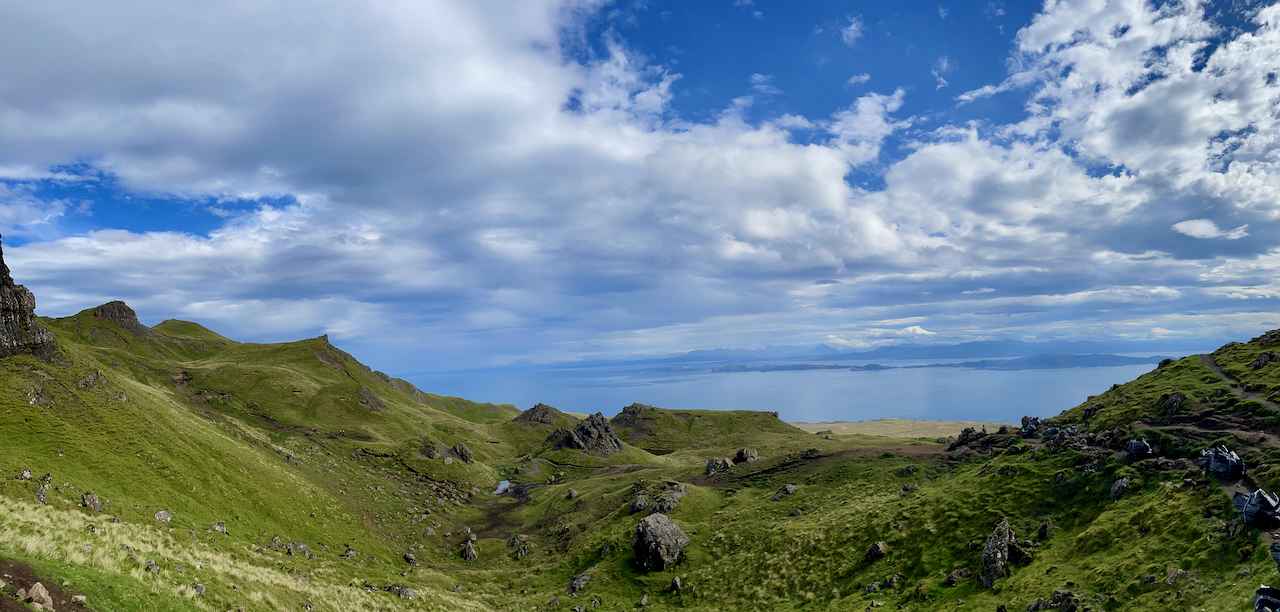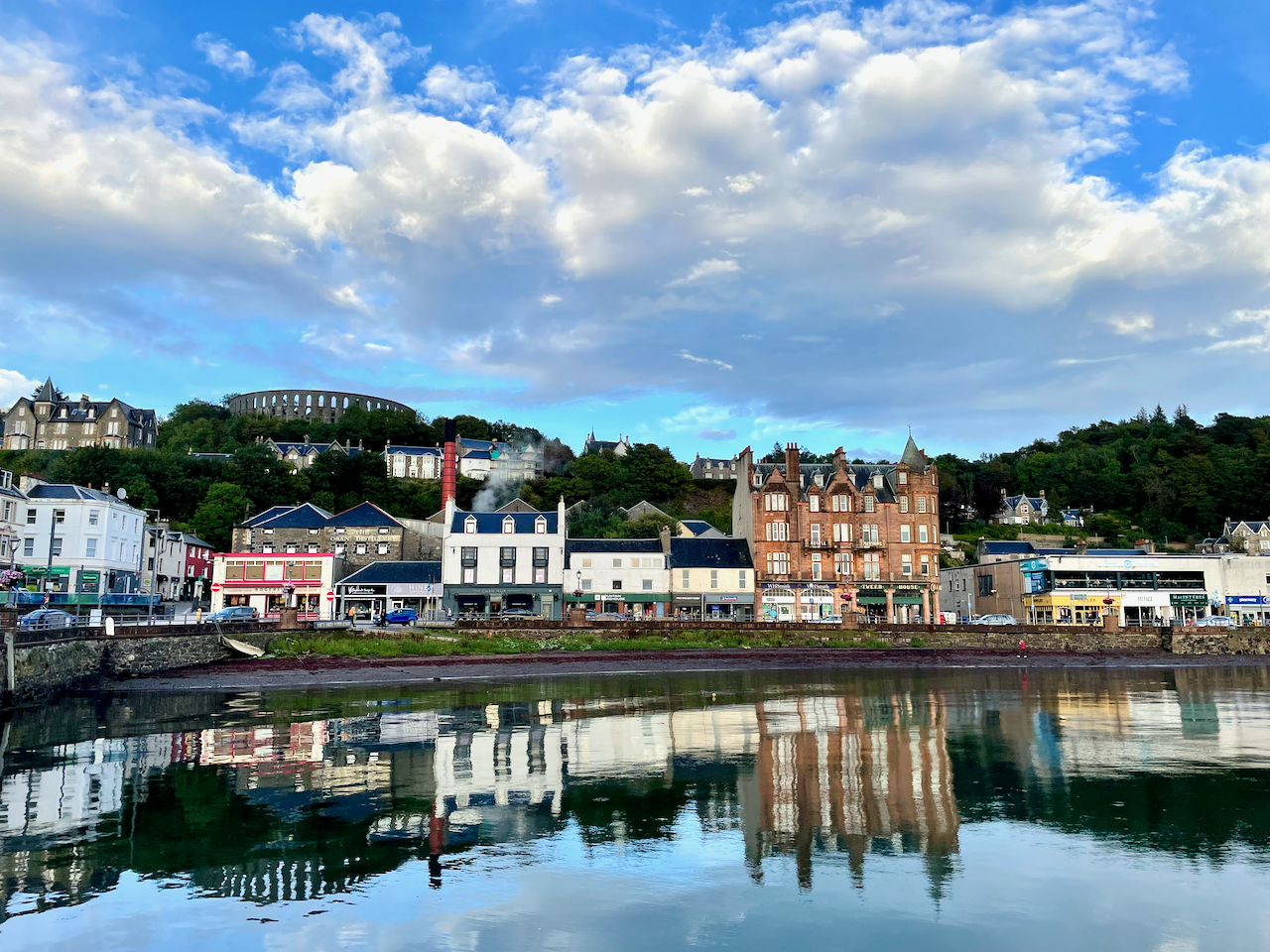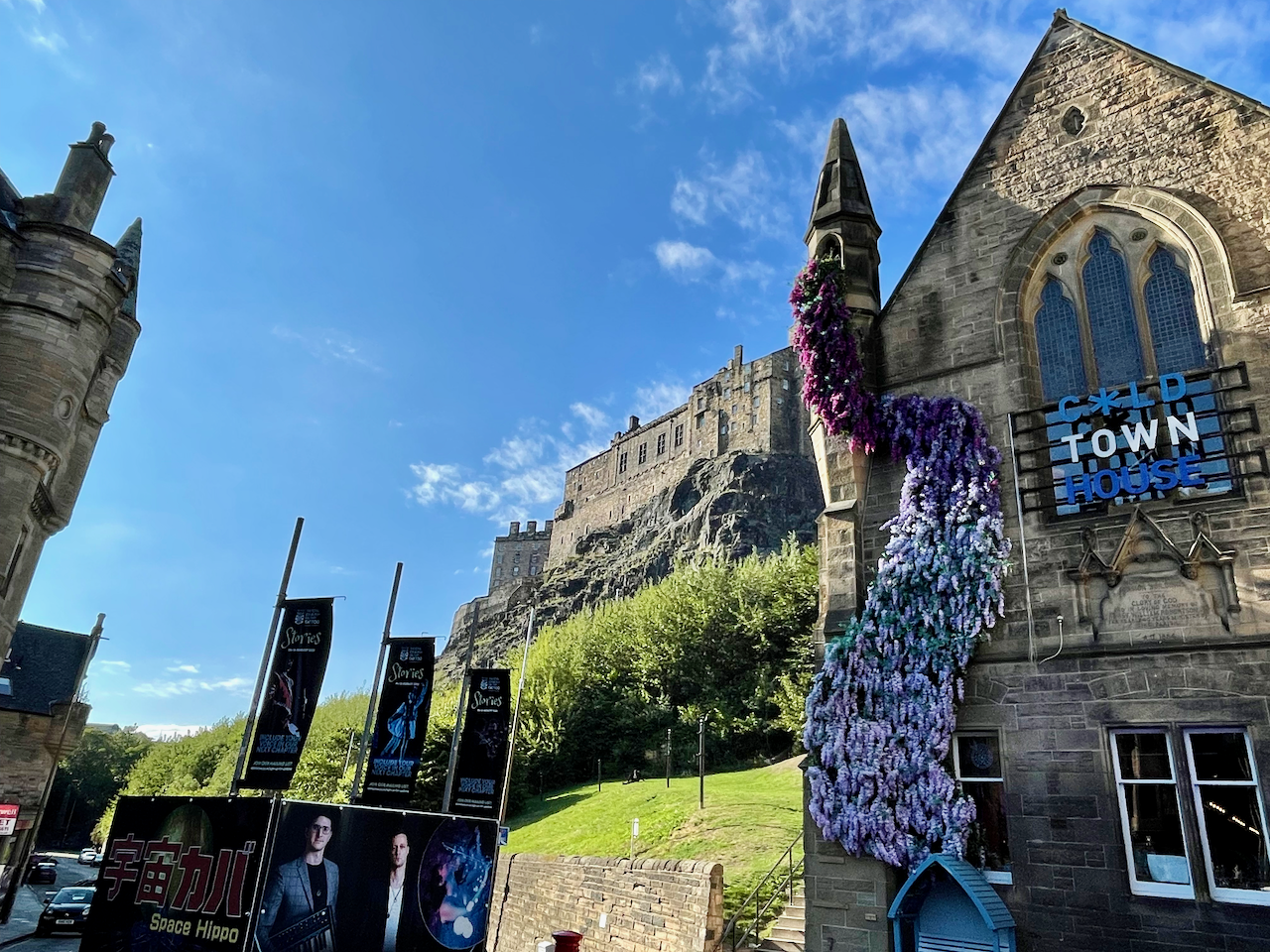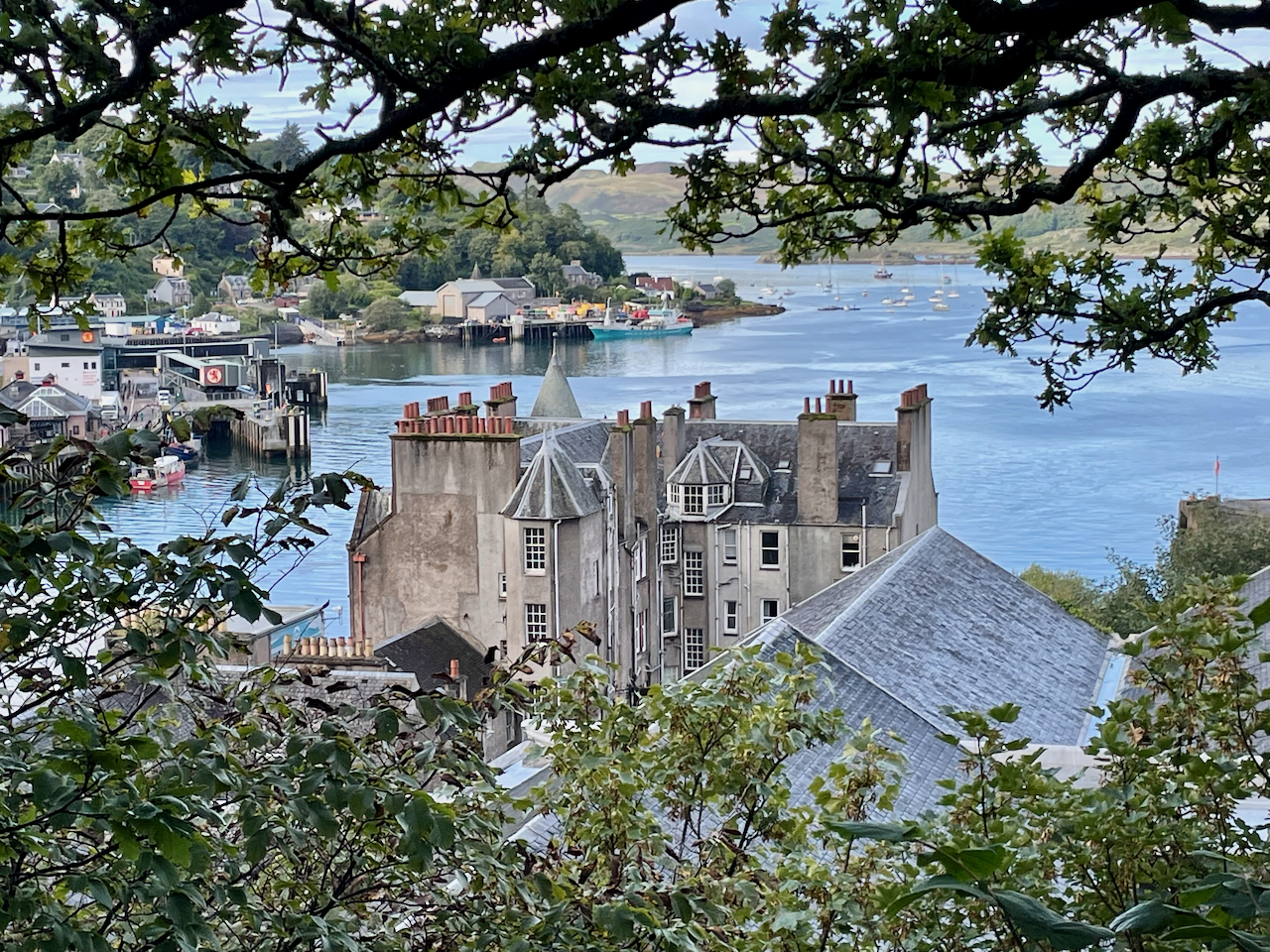Scotland Part 3: Aberdeenshire Inverness and Skye
[Previously on Scotland: we rented a car, and forged our way out into the countryside.]
Let’s start with the first question almost everyone asked us when we mentioned our trip to Scotland: what was it like driving on the wrong side of the road?
Driving was interesting. On the one hand, it took a couple days to acclimate to the left side of the road, and the entire trip I never got to the sort of muscular and mental automation that lets you just sort of cruise between home and the store. Every moment required some amount of active thinking, so some of the longer driving days (3-4 hours between destinations) left me more than a little tired. And on two occasions, that mild to medium sized mental tiredness put me in a situation that could have ended in a mild to medium sized car accident.
On the other hand, it was the absolute right way to see the country. I’ve written before about how much I love properly wandering when in a new place; of giving yourself the time and space to move less efficiently from A to B, get lost, and still find your way back on track again. Letting go of the destination and letting the journey take you on its wings and whims. You’ll find things you would have never known to look for, and make memories that you could never have predicted. And on this trip, driving was the perfect way to let us do so.
There was something wonderful about being able to pull off whenever we felt like it to take photos or explore or just to see what was up that particular road (experience says this happened roughly every 20 minutes or so.) Sometimes that meant finding new things we didn’t expect, such as the castle from Outlander (and the roughly two hundred or so middle-aged white women who had made this a must-see for their trip.) Or when we hiked up a small hill to find a single grave overlooking an ancient graveyard, telling the story of a young man who had chosen to lovingly maintain that graveyard until his much-too-early death at 29.
It’s also nice that there’s a common country-wide speed limit based on the type and kind of road. Unless otherwise posted, single lane roads are 60mph and dual lanes (mostly highways) are 70. Does this mean that some of the tiny little one-lane roads through the middle of nowhere, carved between sheer cliffs and absolute nothingness are also 60mph? Yep. Does this make some of them terrifying? Absolutely. Does it make it easy to otherwise always know what the speed limit is so you don’t get a ticket? Yep.
We were also helped by the Scottish weather deciding to behave on our behalf. Despite threatening to rain almost every day that we were there, it only really rained twice: once on the single day we hired a driver to take us on some Scotch tours, and once on the absolutely terrifying trip between Oban and Crieff - something which did not make that particular drive less pucker inducing. Beyond that, the weather seemed content with letting the clouds add a little showmanship and drama to the scene, which only made it more enticing to pull over and take photos everywhere we went.
So driving was the absolute right decision for this trip. And in fact, should we ever go back, I’d love to rent a sports car or a motorcycle, because there are some genuinely stunning driving roads.
Anyway, with that having been described, let’s get to Aberdeenshire.
Aberdeenshire was the first item on my must-do list, because it’s where we’d see Fraser Castle. The history of this cursed trip meant this was also the first place we’d booked, and we wrapped much of the first half of our trip around just ensuring we’d have time to properly see the castle without being rushed or having it be a quick stop between one place to another. This was a big reason we were here, and it deserved its due, its time, and its place.
The drive from Edinburgh to Aberdeenshire itself was lovely, so I’m told. The scenery north of Edinburgh was farmlands that fell off into the ocean, as it’s been described to me. With lots of cute little towns that gave way to gently rolling hills, I’ve heard.
I know none of this, because I was white knuckling my way around fourteen thousand roundabouts as I navigated a low-level panic attack for three hours. It was great.
But this is what I signed up for. Literally. I wanted to drive. So I put my faith in my credit card’s very generous rental car insurance policy, and let my car tell me “take the fiftieth exit of the roundabout, headed towards an unpronounceable string of syllables written out like a Jackson Pollack.”
Lunch was in a lovely seaside town where I resisted the urge to tell Beth that this is where we were staying now, and instead I ordered a wonderful smoked fish stew while we watched the ocean. As a bonus for completing the first level, the universe let me park near two Ferraris and a McLaren, so the view was doubly nice.
Later that drive, we hit one of Beth’s “it would be nice to”s - which was also our first visit of a proper distillery: Arbike distillery, producing Scotland’s first rye whisky in over 100 years. Due to Scotlands strict drunk driving laws - as well as everything I just wrote about - I limited myself to small sips of their offerings and a virgin cocktail in their lovely tasting room which overlooked the farm and the ocean. I can’t say I loved any of their Ryes, but by Beth’s palate it was a worthy use of our time.
(My final post on Friday will cover a wider roundup of our distillery tours so as not to make each of these posts even longer. Stay tuned for more of Barrett’s Thoughts On Scotch™ this Friday.)
One of my other requests on the trip was that we stay at a proper UK inn. As I mentioned before, we tend to lean towards AirBnBs, but I wanted to have the experience of a proper inn, with a restaurant and pub below, and rooms above. I don’t know why, but it seemed so quaint and unique to the region (I know, I know: be more American, Barrett.) So we made sure to book two of them on this trip. Aberdeenshire was the first.
So imagine my surprise when we pull into the parking lot later that night at our Inn only to discover that we’ve picked somewhere best described as “Scottish Montana, by way of Texas.”
Despite looking like an old church, and having the carpet be a damn near perfect emulation of the predominantly purple Scotland Forever tartan, this place proudly advertised its “American style pizzas and hamburgers” on a banner outside. Meanwhile inside, the hunting-lodge-themed restaurant was full of dishes like Kansas City Ribs, Jack Daniels Wings, and “Texas Chilli Nachos” (not a typo.)
Dinner was … fine.
Regardless, we weren’t there for the food; we were there for the proximity to the Castle. So the next morning we packed up, and packed out for Fraser Castle.
A friend asked me after I got back whether I felt like seeing Fraser Castle was “like coming home.” And the honest truth is that it didn’t. As much as I fell in love with Scotland as a country, that more intrinsic search for identity was my mother’s, not mine. I grew up in a very Italian family, with our own customs and viewpoints and historical past, so I had that grounded sense of familial identity my entire life courtesy of my aunts and uncles and cousins and grandparents. But it did feel like I was doing something fundamentally important, even if on behalf of someone else.
Seeing Fraser Castle - walking up to it, and walking through its stone corridors and soaring rooms - felt like checking an item off a bucket list - which I’m now realizing is a much darker sentence than originally intended because, in a very literal sense, it was. It felt like I was able to give a small gift to my mother, even after she passed: you weren’t able to see this, but I was able to do so for you. You never made it here, but I did. And because of that, in some ways, some part of you did too.
That’s not to say that I didn’t enjoy it, or that it felt in any way like an obligation. I was genuinely excited to see Fraser Castle because I’m generally excited to see any castle. That I had a familial connection only made my excitement greater. And this one was a particularly interesting castle because of their approach to the history of the space.
I won’t give the entire history, but suffice to say that it’s changed hands a number of times (like all of Scotland…) In time, the final owner donated it to the Scottish Historical Society, who went about restoring it to the best of their ability. Like most castles, it was built up in various stages as new generations built new additions, either because of advancements in technology or fashion. So there were parts that were much older and parts that were hundreds of years newer. And you could see the difference in building techniques, components, and materials throughout.
Remember how I said so much of Scotland’s experiences went so far above and beyond? This was another one. Fraser Castle embraced these striations of history by staging every room with period accurate furniture to how it would have looked at the time that that room was built. So the parts build in 1500s have period accurate furnishings, tapestries, and artworks. Meanwhile the parts built in the 1700s or 1800s have their own period accurate furniture, books, and the like.
Not content to just blow your mind with historical accuracy, there are historians, volunteers, and researchers in almost every room of the castle to tell you the specifics about that room, the details of its staging, when it was built and why, and particular stories of note for that room. As an example, we spent 15 minutes in the library as the historian told us when the room was built and why, how it changed the life of that particular Laird, who currently owns all the books, even where the rug came from - and it was all just so fascinating.
I climbed to the top of the highest turret, looked and out across the grounds, and leaned on a parapet as the wind whipped a tear from my eye. I’m glad we made the time to do this. I really enjoyed it. Mom would have loved it.
— — — — —
Three hours and one tea and scone in a castle courtyard later, we set out again for our drive to Inverness. Beth had been … not quite “insistent” but perhaps well beyond “suggesting” that we route ourselves the long way through Cairngorm National Park. Given that this potentially added a solid hour to our trip, I had been hesitant. Wandering was one thing, but this was plainly just going the long way round on an already long day of driving. The route through the North was likely to be just as interesting, albeit in different ways, and it was undeniably shorter.
But Beth was convinced this was the right choice, and I’m glad she convinced me. Because she was right.
Cairngorm National Park is fucking stunning y’all. It ranged from merely eye-wateringly beautiful to looking like an impressionist painting. If you think of it as high plateaus and tundra, you’re not far off. You get these beautiful rolling hills that overlook huge swaths of multicolored scrub brush which collide with deeply packed forests, all across massive valleys set between undulating ancient peaks.
Cairngorm is also interesting because it’s not just vast expanses of unspoiled land a-la US National parks, but throughout the whole of the park there are towns, houses, restaurants, and the like. People live there just as they do throughout the rest of the highlands - hell, there are huge distilleries in the park. So sometimes we’d be following this little mountain stream at the bottom of a valley, turn left to climb up to the top of a peak, pull over to take a photo of a lone castle rising from the speckled landscape below us, and then just as we felt like we were perhaps alone for a hundred miles in all directions we’d turn a corner and drive right by a combination cafe and tire repair shop and an elementary school. I don’t know why, but normal life just going about its business inside of a national park is kind of a funny concept to me.
This drive, in particular, was where it was really advantageous to be able to stop whenever we wanted. Because aside from the various and sundry “holy shit” levels of beauty, we could go a little more out of our way and discover some other castle, or a carved stone photo monument, or an ancient church, or in one particular case, Glenlivet Distillery (four stars, would recommend, turns out they know what they’re doing - more on that Friday.)
Suffice to say that we got into Inverness somewhat later than planned. And after meeting our lovely B&B hosts and getting settled, also somewhat later than was necessary to get a table at any of the places we’d targeted for dinner. Inverness was, for some unknowable (at the time) reason, absolutely packed that weekend. We blew through our first through fifth restaurant options, and were further stymied by a dozen more options we’d walked by which were all booked for the evening. It was starting to look like our dinner options were going to be whatever we found at Scottish McDonalds, just for absolute lack of all other options.
At somewhere around eight thirty, after having walked the majority of the city and being unable to find somewhere with a single table available, we were able to track down a restaurant that Beth had read about which served Mediterranean Turkish food. I feel a little bad, because by the time we got seated we were fairly hungry and grumpy and a little snippy with each other, so I don’t think the restaurant got its fair due in terms of the flavor and quality of the food. We more or less just shoved food into our mouths until we felt human again, which happened right around that time dessert was served. So when I say that it wasn’t one of the more memorable meals of our trip, that’s more of a personal confession than anything about the restaurant itself. I can say that the server was very friendly and very much wants to visit California one day. And that I hope he does.
Later that night, once again not quite ready yet to turn in for bed, we wandered the streets of Inverness in search of a nightcap. And it wasn’t until this moment that we finally realized why it had been so hard to find a spot. See, this was Saturday night. And everywhere we looked we saw pretty, young people, moving in packs. Not uncommon for any given city, but that was all we saw. In fact, once we started paying attention, we realized that we were positively surrounded by 20-25 year olds, dressed up to hit the town and catch a little attention the way that 20-25 year olds do on Saturday night. And every bar was set up to cater to 20-25 year olds and their particular tastes in the very specific way that these kinds of bars do.
So we were sitting outside of a place called “Vibe” or something similar, where the bass vibrated the windows, and minidresses moved in and out in packs of four, and the drinks specials were given a place of prominence on the outside windows as if they were a Michelin star or Zagat award, when we suddenly put it all together:
Y’all, Inverness is a college town. And we were in the very heart of the coolest part of that college town on a Saturday night. And we are both A) not cool, and B) way too old to hang with college kids. Everything made sense now.
So with expectations redirected, we decided to embrace the feeling and go with it. And that was the right decision, because ten minutes later, we’re in a dive bar with a band playing something approaching Scottish folk music at double speed, drinks in hand, watching an eighteen year old folk dance with an eighty year old.
If that ain’t a perfect way to end the night, I don’t know what is. You wanna know what my most prominent memory of Inverness is? It’s that right there: young and old alike in the same dive bar, dancing together to music which aims to appeal to both of them. It was lovely, and charming, and something that felt wonderfully normal.
The next day we’d set up a driver to take us to a couple distilleries. That driver happened to be the owner of our B&B, and this was an additional service he provided for guests and other interested parties. This being Sunday, we’d expected it to be both a busy time for tours and tastings, so we booked one of Beth’s must-dos, Clynelish, a month in advance, and let him know that we’d trust him on whatever other distilleries he wants to recommend, as he’s the local expert.
This is when we found out that, with very few exceptions, Scottish distilleries are only open Monday through Friday, from 9-5. In fact, when we booked the tour, it took several weeks for him to find a single other distillery within a two hour drive of Inverness that was open that Sunday. I’ve subsequently googled “Why are Scottish distilleries not open on weekends?” and Google just shrugged and offered me results to other, more answerable questions.
Regardless, the other distillery he’d lined up was Tomatin, so we’d be visiting it in the morning, and then Clynelish for the afternoon. Both excellent, in completely different ways. Tomatin was very much a working distillery, where much of the tour consisted of things like “Don’t touch that, it’s hotter than hades and will take all the skin off your hand,” and “There’s a fancy piece of equipment lots of distilleries use to clean that pipe, but we figured it was about the same size as a football, so we put a football in a net and just launch it through the pipe under pressure.” And “We cut a hole in the wall because cats like to sleep under the boilers in the winter, and we want them to eat the mice.” Very blue collar, honest, and appropriate.
Clynelish was the complete opposite. And here I’m actually going to get into details instead of waiting until the last post because holy shit this was closer to an escape room and art installation than a simple tour (though, to be clear, the actual distillery tour itself was similarly excellent and one of the more technically informative that we went on.)
Remember what I said last time about Scotland going hard as hell when moderate effort was all that was needed? Clynelish Distillery is 2 hours from fucking anywhere, in a town of like fourteen people and ninety sheep - all you’d need for a distillery tour is a walkthrough of the stills and a spare room for the tasting. Hell, I’ve done a hundred brewery tours that were little more, despite being in large cities or tourism spots.
So when the tour began with the guide inserting a golden key into a secret lock in order to transform the conference room table we were seated at, it really set the tone. The center of the table rose up to present secret drawers, and then we unlocked those secret drawers by finding more keys. Which made more drawers light up. And then those new drawers held games and sensory experiences about the Scotch flavors. All of this is being presented to us with lighting changes from the host’s verbal cues and sound effects that are absolutely meter perfect. It was an absolute performance. And THEN, as if that wasn’t enough of a presentation, our tasting came with a chocolate pairing.
There is fuck all else around this place. The only reason to come to town was to come to the distillery - either for work or for pleasure. And yet - the tour was a straight up production. It should have cost a hundred dollars a person. It was frankly worth a hundred dollars per person. It cost 19.
It was absolutely bonkers and we absolutely loved it.
[Side note: one of the fun themes we discovered around Scotch distilleries throughout our trip is that they have a habit of being placed out in the middle of nowhere. Oh sure, there are a number grouped around Speyside and throughout the Cairngorms, but even most of those are fairly far away from what you’d call a major population area. Later I realized that this was likely closely related to a history of illegal and semi-legal distillation, about which every distillery had wonderfully flamboyant stories involving secret smoke codes, scouts in trees, larceny, piracy, and the occasional maybe-accidental-murder of a representative of the English crown. But at the beginning, we did wonder why all distilleries seemed placed somewhere between the ass end of nowhere and Brigadoon. Anyway, back to the trip.]
As we drove back to Inverness, our driver/innkeeper was so apologetic about being unable to find a third distillery that he offered up some of his favorite selections from his own collection for us to taste after our dinner. So after partaking in some high end pub food from a celebrated family-run restaurant, we settled into the living room for some Scotch and conversation. Joined by his lovely wife, we ended up talking deeply and philosophically about Brexit, the upcoming Tory PM election, and the role and purpose of the Queen. About how to be happy and what to seek in a community. About Scotland and England and the United States and the connections and disconnections between all of them.
We chatted until well after midnight over three incredible Scotches, making sure to each try all of them at least twice, in order to properly compare them against our memories of what we’d tasted that day. It was perfect.
By the beginning of our third and final day in Inverness, our B&B was starting to feel like we were actually staying with family (in the good way, not in the “I’m drinking to deal with you people” way…) So it was with equal parts sadness and excitement that we set off for Skye - but first we had a brief stop to get measured for a proper formal kilt in Fraser tartan. This was Beth’s birthday present for me, something I’d known since I burst out of my office four weeks prior to the trip announcing “I know where I’m getting my kilt made! There’s a place called Highland House of Fraser! It’s perfect!” She stared at me for a moment, uncharacteristically silent about what was obviously kismet, and then made the judgment call that this particular secret - that she’d already made an appointment for me - wasn’t going to last until Inverness. So it wasn’t a surprise, but that didn’t make it any less special or anticipated. The delivery date is 10-12 weeks from ordering, and I desperately hope I get it before Christmas.
Setting off from Inverness, we were headed towards Skye. This took us down past Loch Ness, where we stopped to dip our fingers and toes into the most famous lake in the world and the weirdest thing we saw were Germans. Further down the lake we found Drumnadrochit (pronounced by imitating Klingon with confidence) where we could visit the Loch Ness Exhibition museum, and grab lunch nearby. Remember what I said about expectations? So here’s what I was expecting from the Loch Ness Exhibition when it promised to explore “the mystery of the legend” or something similar: a cheap and classless tourist trap that assaults you with a hundred different variations on “Nessie is real!!1!” before chucking you directly into the gift shop. But we had been assured by Beth’s cousin that “you need to see it.” So we did.
Well, score one for Kelly, because she’s right. What I wasn’t expecting was a genuinely fair and even-handed history of Loch Ness from a geological, mythological, and ecological standpoint. I didn’t expect to be showed how Loch Ness came to be formed in a historical and geological sense, how the Loch Ness monster came to exist in our minds and myths, and the long history of scientific research aiming to validate or disprove its existence. Nor was I expecting an examination of the sociological roots of the monster, scientific analyses showing the (unlikelihood) of the Loch Ness ecosystem supporting a creature of that size, and how this research led to a broader understanding of the present and future effects of climate change on the Loch. Most of all, I did *not* expect this to be presented across seven fully set-dressed, production-quality immersive stages.
The information was scientifically and historically interesting, the areas were excellently produced and designed, and the overall experience was genuinely surprising. Again, it didn’t need to be - the busses would still stop there and unload fifty tourists at a time because “We want to believe in the Loch Ness monster!!” But at some point, someone made the argument that this exhibition could be so much more than just a tourist trap for Nessie lovers, and they really committed to ensuring that was the case. Well done all around.
Lunch in Drumnadrochit was another highlight, for a completely different but very similarly Scottish reason. And I think it’s finally time we talk Haggis.
Roughly 9000% of the people who knew we were going to Scotland have asked us about haggis. Moreover, they’d ask us - in tones suggesting it was akin to requesting a threesome with their kid’s teacher - whether I was planning to try haggis.
First of all, I’m offended that anyone ever thought there was some kind of culinary item I wouldn’t try at least once. I’ve eaten fried bugs. Second, having eaten roughly every part of a cow during my time in Argentina, and rather enjoying both black pudding and blood sausage, the idea of haggis wasn’t particularly unsettling. I mostly thought it rather insightful that the Scots would appreciate an animal enough to not let it go to waste, and resourceful that they would find ways to do so well before most modern preservation techniques allowed for long-term food storage.
We promised each other that even if we didn’t like it the first time, we’d try it two more times just to make sure we didn’t get a bad batch. So throughout the trip, we tried haggis a number of different times, prepared a number of different ways. Starting with our first day in Edinburgh, where I ordered haggis for the first time - in fritters, as a side dish to my fish and chips. But we needn’t have worried about grudgingly completing our promise of testing various haggis dishes for science, because it turns out that haggis is fucking delicious.
Meaty and full of umami, with a slightly sticky texture that coats your mouth (and makes for a perfect pairing with a cask beer) haggis is a savory treat that any non-vegetarian would and should enjoy. I think in 12 days I/we ate haggis seven or eight different times, either as an appetizer, as part of the main course, or as the only main course. Haggis fritters were first, but that led pretty quickly to a dedicated haggis main course at that family run restaurant in Inverness, and later very memorably as a topping for a simply spectacular venison burger. In between there were haggis lunches and dinners whenever it had been more than 36 hours between servings. We had a haggis ranking, but all of them ranged from good to great.
But aside from it being a distinctly Scottish dish, there’s another particularly Scottish aspect of haggis that I absolutely loved: the country-wide commitment to pretending that haggis is an actual animal, native to Scotland, hunted throughout the highlands for its meat. From cafe-adjacent shacks, to high end restaurants, there seemed to be this unspoken code that when haggis was featured on the menu, it would be accompanied by a descriptor such as “may contain lead shot” or “local free range haggis.”
Once or twice I mentioned that I’d heard that this year’s migration was especially heavy, and it was received with a serious nod, or a follow-on comment that it was good news, because last year’s migration was small and people had been worried.
If there’s one thing I appreciate, it’s commitment to a bit. It wasn’t universal - I’d say it came in about 50/50 whether they maintained this culinary kayfabe - but I appreciated that this was so widespread, and crossed so many sociopolitical, geographic, and economic barriers. I dunno, I found the whole thing charmingly cheeky, and I loved it every time.
This is all to say that lunch in Drumnadrochit was a lovely “locally shot haggis with chips (may contain lead shot)” from a food truck and ales from the nearby pub. We sat outside, and in every direction we saw rolling green hills. Just beyond the slight breeze, there was the sound of bagpipes emanating from the park across the street as a man in full formal kilt played for the lunch tables and families. I have such a strong sense memory of a very genuine and deep contentment in that moment. Were it not for the long drive ahead, I could have stayed there for several more hours.
— — — — —
Getting to Skye was yet another exercise in sinuous roads through lush green hills. Being there was an exercise in personal financial restraint.
We arrived just before sunset, and after a quick trip to the local supermarket for dinner supplies, we watched the sun set over the sound as the sky absolutely exploded into rich pinks and deep purples. Skye was one of Beth’s “must-do”s and we had a very full couple of days planned. But this first night, our plan was to just sit in our rented house, smell the fresh salmon as it cooked in the oven (admittedly after a somewhat protracted exercise in deciphering the not-particularly-self-evident hieroglyphics that served as operating instructions), sip a little Scotch, and watch the sky leisurely darken across its shifting color gradients. For a trip with so much to do, this night of doing absolutely nothing was a blessing.
The next day we climbed a fucking mountain - to start the day. Was I expecting this? Nope. Was I actually told that it would be a quick walk up a hill? Yep. Did I let Beth trick me into hiking again because I’ve learned nothing from the last three times she did so? Also yes.
Was it worth it? Absolutely.
More than any other part of Skye, I’ll remember the views atop The Old Man of Storr. That, more than anything else, will be seared into my mind as the singular vision of the isle. If you can imagine a rocky outcrop exploding out of a lushly deep green mountain, which dips to steep hills the color of malachite before dropping directly into the ocean, you’re partway there. Now stretch it sideways to a perceived forever in order to make all of that imagery an unobstructed 270 degree panorama in your vision, and turn yourself around again and again to take in every piece of that view. It was genuinely magical. And worth the two hours of uphill trudging that left me drenched in sweat. (“We dwarves are natural sprinters - very dangerous over short distances…”)
It’s also where Beth breathlessly declared, with absolute sincerity, “I want to move here.” This had been a constant refrain from almost the moment we hit Edinburgh, but in that moment, standing atop that peak, I had no logical or emotional arguments against it. There was no reason not to, for if paradise exists on this Earth, then Skye may be it.
And that was just the start to the day, one which included (failing to see) dinosaur footprints near the top of the isle, buying hand-dyed wool from a middle-of-nowhere shop Beth had wanted to visit in person, swinging by Talisker Distillery for a quick sample of their wares, and - in another trip highlight - petting the “hairy coo” that had positioned themselves conveniently beside a fence on the side of the road where tourists could come by and give them head scritches (and probably snacks, though we stuck with the head scritches.)
If you want to see the two happiest photos of Beth from this trip, they were both taken within a few hours of each other that day; one standing proudly atop a mountain, and one petting a cow.
This is also where driving got more than a little interesting. You see, roads in Skye are often a single lane. Not a single lane in each direction; a single lane for both directions of travel. And oftentimes this is the only road between two points on the map.
Now you may be thinking, “But Barrett, if there is a single road serving two directions, don’t you run into an issue when two cars are coming opposite directions on a single road?” Yes, you do. Which is why there are strategically placed two foot wide pullouts every couple hundred yards or so, and a somewhat identifiable but also personally variable calculus for which of those cars is responsible for using said pullouts to let the other car(s) by.
This calculus is referred to as “The Highland Code” and includes a requirement that those who do pull out are to receive a wave when those who did not pull out pass by. The punishment for forgetting to wave is immediate and instant immolation (at least according to those who prepped us in advance for this specific scenario.) It’s complicated, but works 95% of the time. (The other 5% are tourists.) And shockingly, despite having to discern whether to pull out or not pull out a hundred different times throughout these few days of driving across Skye, we never once made that joke that you just made in your head right now. (I know - we’re disappointed in us too.)
But I’ll say this: it’s absolutely worth navigating this occasionally terrifying driving scenario (“hold on, let me reverse backwards around this blind curve because we’re nose to nose with a Skoda and only way out is 50 yards behind me”) in order to take in the breathtaking beauty of Skye. Simply driving around was one of my favorite parts of this trip, and I enjoyed having an excuse to take things a little slower, because it meant I had more time to look around in awe. Some of my favorite photos come from Skye, and I still find myself in some amount of disbelief that the green of the hills was actually that green; the sky was actually that bright blue; the clouds that perfectly placed our maximal drama; the distant peaks actually that starkly perpendicular to the earth below.
But they were. They all were. Everywhere.
The night ended back in the small town of Broadford near our rental, at a restaurant called The Claymore, once again watching the sun set across the water. That evening the sky decided to forego the that-was-so-yesterday pinks and purples in favor of painted pastel blues and oranges. And so our meal was punctuated by repeated “oh honey, look out the window”s and “oh, it got better”s yet again.
Of particular note was the group of twenty next to us, all of whom were meeting for the first time on this trip. They were a motorcycle touring group, and ranged from Harleys to Beemers to Ducatis, and everything in between. I have to admit that I felt slightly jealous. Perhaps next time. Perhaps one day I’ll have all the time in the world to spend flying around Scotland atop my motorcycle, looking left and right to see everything without obstruction. Hopefully.
As we walked back to our rental later that night, enjoying the gentle sounds of the waves lapping the low-tidal shore, we ran through a dozen scenarios that would allow us to move here and never leave. All of which were a wonderful fantasy; some of which were closer to financially possible than we initially thought. I don’t remember for sure, but I expect our dreams reflected the same - a nighttime of greens and blues that perhaps went on forever in our minds.
Tomorrow we’ll head out to Oban to begin the last leg of our trip, and to celebrate my birthday. To say that there were surprises is an understatement - on a trip with surprises aplenty, this may have been the most surprising part of our entire journey.
